Hotels today compete not just on service but on creating memorable, Instagram-worthy spaces that guests want to experience and share. Modern travelers seek accommodations that offer unique design elements, technological convenience, and emotional connections to place and purpose. From sustainable biophilic environments to smart technology integration, innovative hotel room design ideas are transforming the hospitality landscape by balancing aesthetic appeal with functional comfort and operational efficiency.
1. Biophilic Hotel Room Design with Living Plant Walls
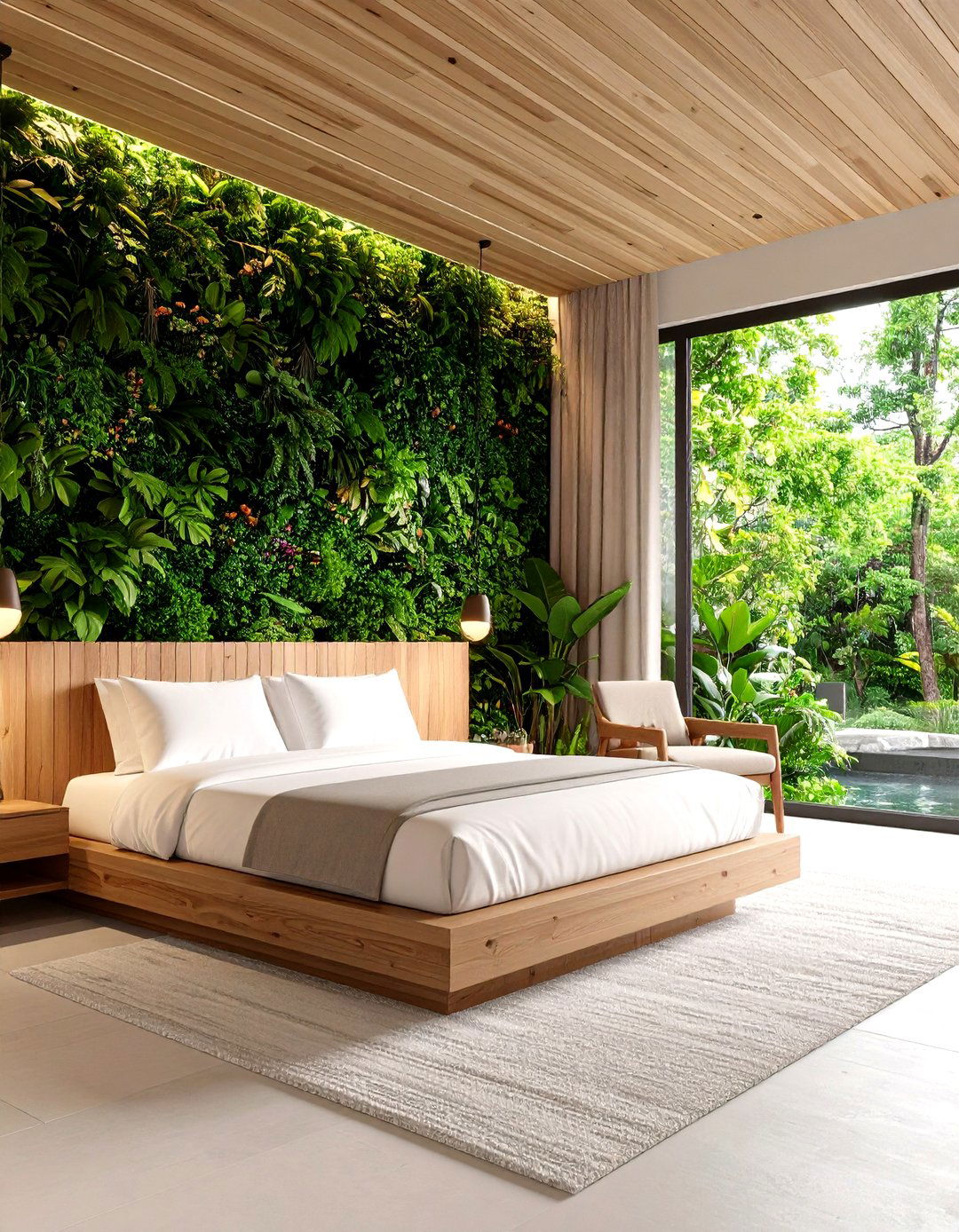
Biophilic hotel room design integrates natural elements directly into guest spaces through living walls, natural materials, and organic forms that connect visitors to nature. This approach transforms sterile hotel environments into breathing ecosystems that promote wellness and relaxation. Living plant walls serve as dramatic focal points while purifying air and creating calming green backdrops for modern furniture. Natural lighting mimics circadian rhythms and promotes healthy sleep cycles, providing sustainable lighting options that guests appreciate. Hotels implementing this design see increased guest satisfaction as rooms feel more like natural retreats than corporate accommodations. Materials like reclaimed wood, stone facades, and water features complement the organic aesthetic while providing sensory experiences through texture, sound, and visual appeal.
2. Smart Technology Hotel Room Design with IoT Integration
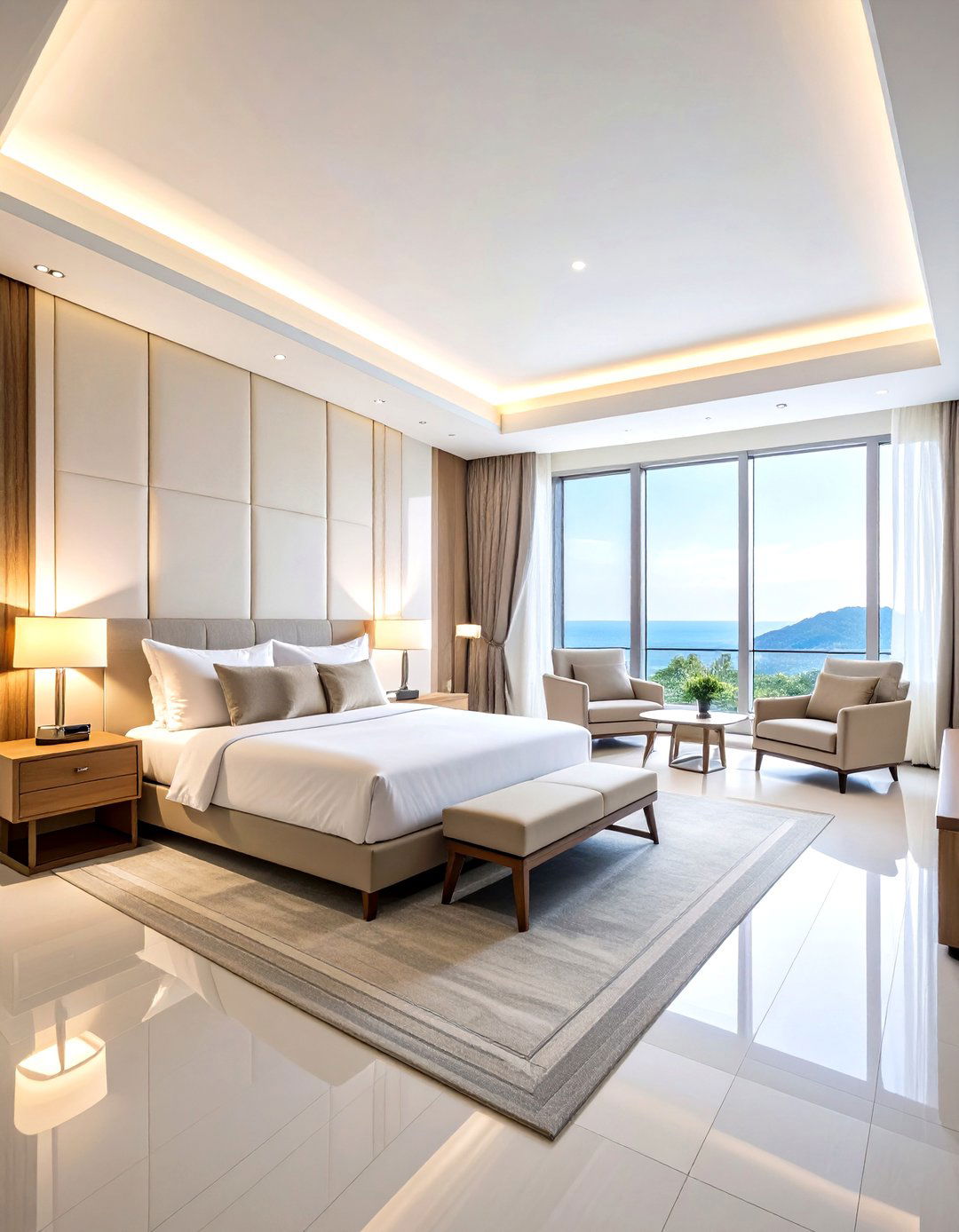
Smart hotel rooms leverage Internet of Things devices, artificial intelligence, and mobile connectivity to create personalized, automated environments that respond to guest preferences. Voice-controlled systems allow guests to adjust lighting, temperature, entertainment, and room service orders without leaving their beds. Smart thermostats use machine learning algorithms to automatically optimize heating and cooling based on occupancy patterns, significantly reducing energy consumption. Mobile key technology eliminates plastic waste while providing enhanced security through smartphone integration. These connected rooms can remember individual guest preferences and automatically adjust settings for return visits, creating truly personalized experiences. Implementation of smart hotel technology results in improved guest satisfaction, streamlined operations, and reduced environmental impact through optimized resource usage.
3. Scandinavian Minimalist Hotel Room Design with Hygge Elements
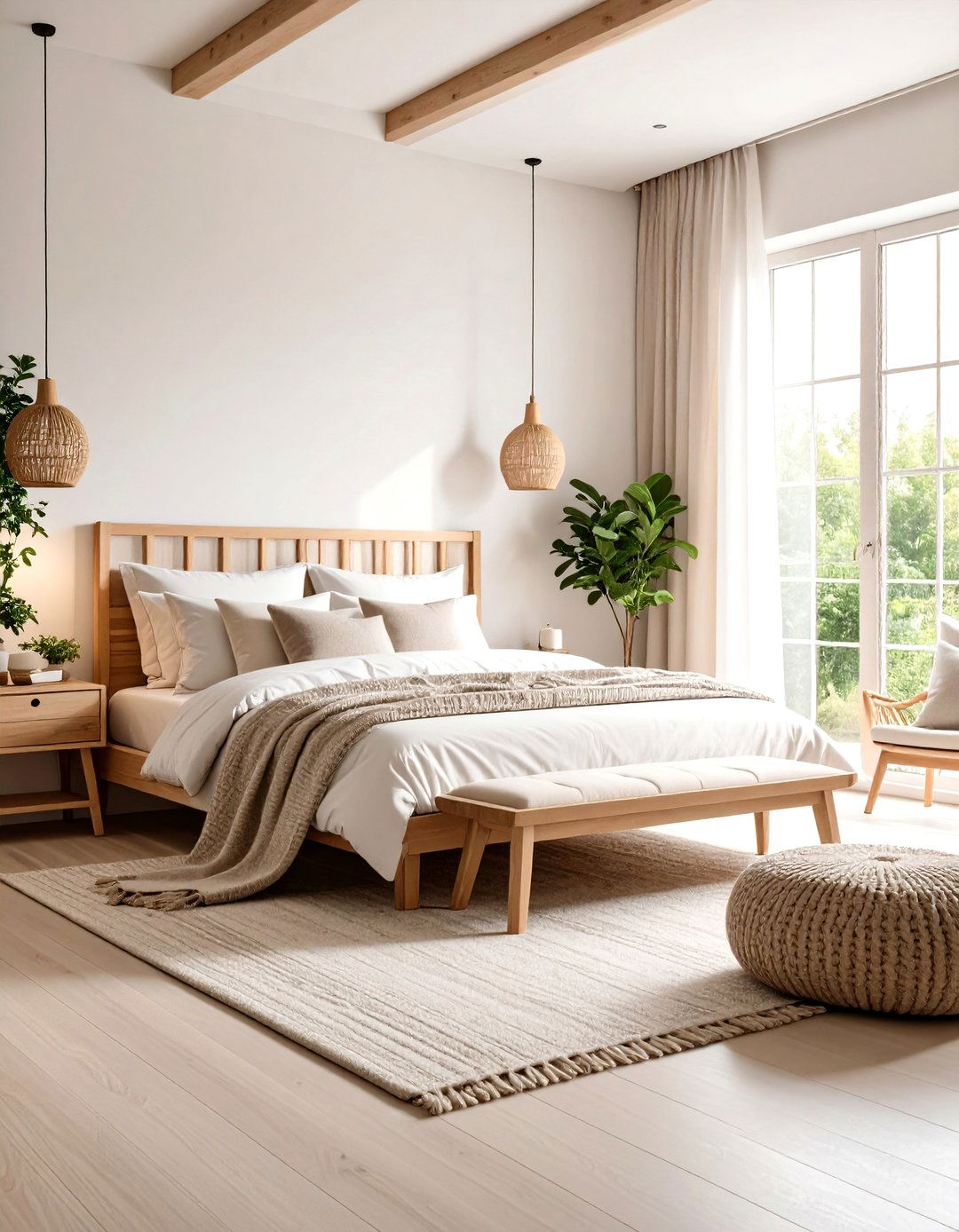
Scandinavian hotel room design emphasizes minimalist aesthetics with light colors, natural wood elements, and functional furniture that creates serene, uncluttered spaces. This style celebrates the Danish concept of hygge through cozy textiles, warm lighting, and thoughtfully curated accessories that promote relaxation and contentment. Neutral color palettes dominated by whites and soft grays maximize natural light reflection, making spaces feel larger and more inviting during shorter winter days. Key design elements include single-tone walls with carefully chosen accent colors in furniture, geometric blankets and pillows, and natural materials that support a lifestyle of comfort and simplicity. Large windows, pale wood furniture like white oak, and minimal ornamentation create airiness while maintaining visual warmth through organic textures and shapes.
4. Wellness-Focused Hotel Room Design with In-Room Spa Features
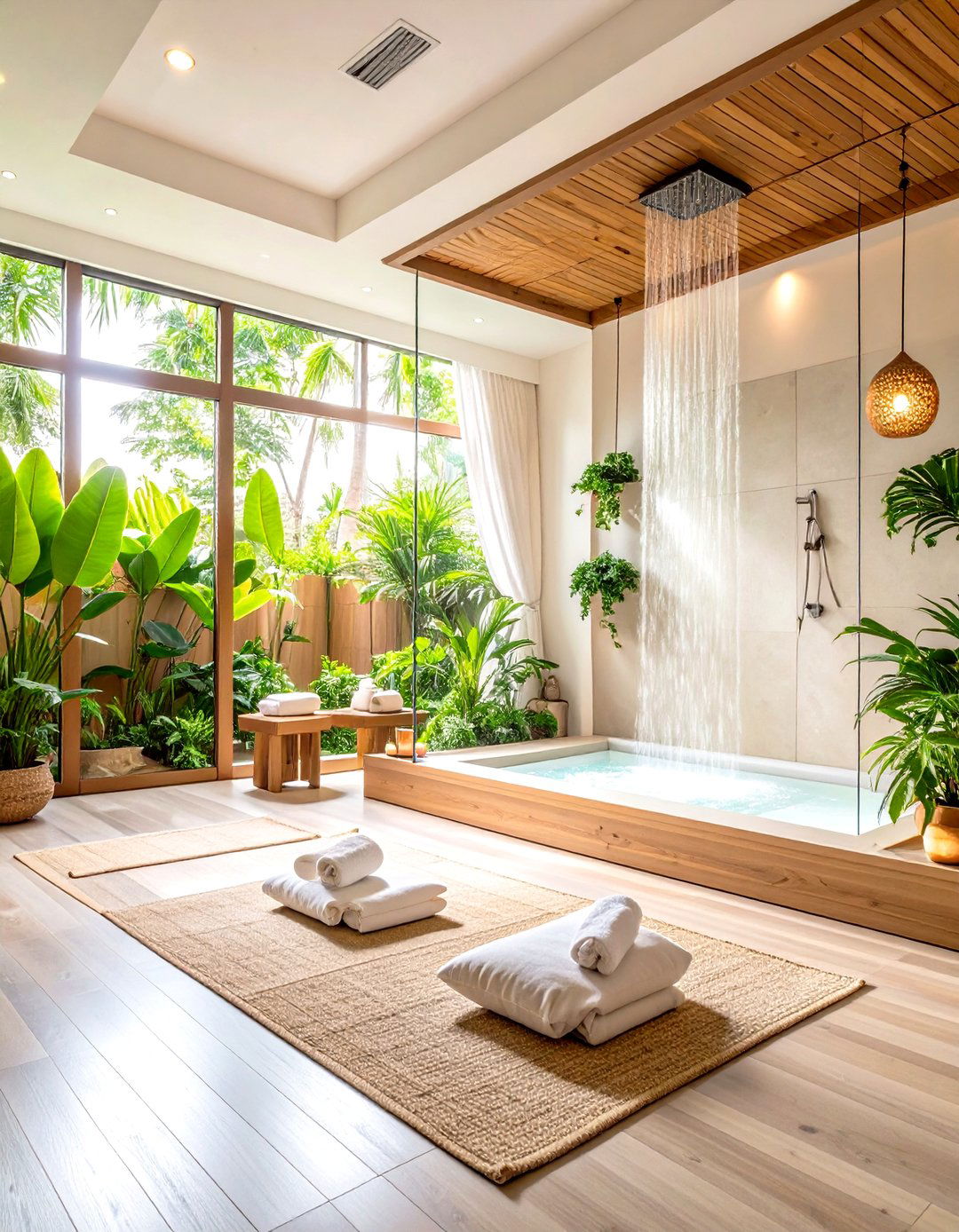
Taking inspiration from the growing wellness tourism market, these hotel rooms transform personal spaces into private sanctuary experiences that prioritize guest health and rejuvenation. In-room wellness amenities include dedicated yoga mat storage, meditation corner seating, circadian lighting systems, and spa-quality bathroom fixtures with rain showers and soaking tubs. Air purification systems and aromatherapy diffusers create therapeutic environments that support both physical and mental well-being. Sleep tourism trends influence design choices like high-quality mattresses, blackout curtain systems, and sound-dampening materials that ensure restorative rest. These rooms often feature co-ed wellness experiences, larger communal relaxation areas, and recovery amenities like infrared therapy spaces that cater to health-conscious travelers. Natural material choices and calming color schemes support the overall wellness narrative.
5. Industrial Urban Hotel Room Design with Exposed Architecture
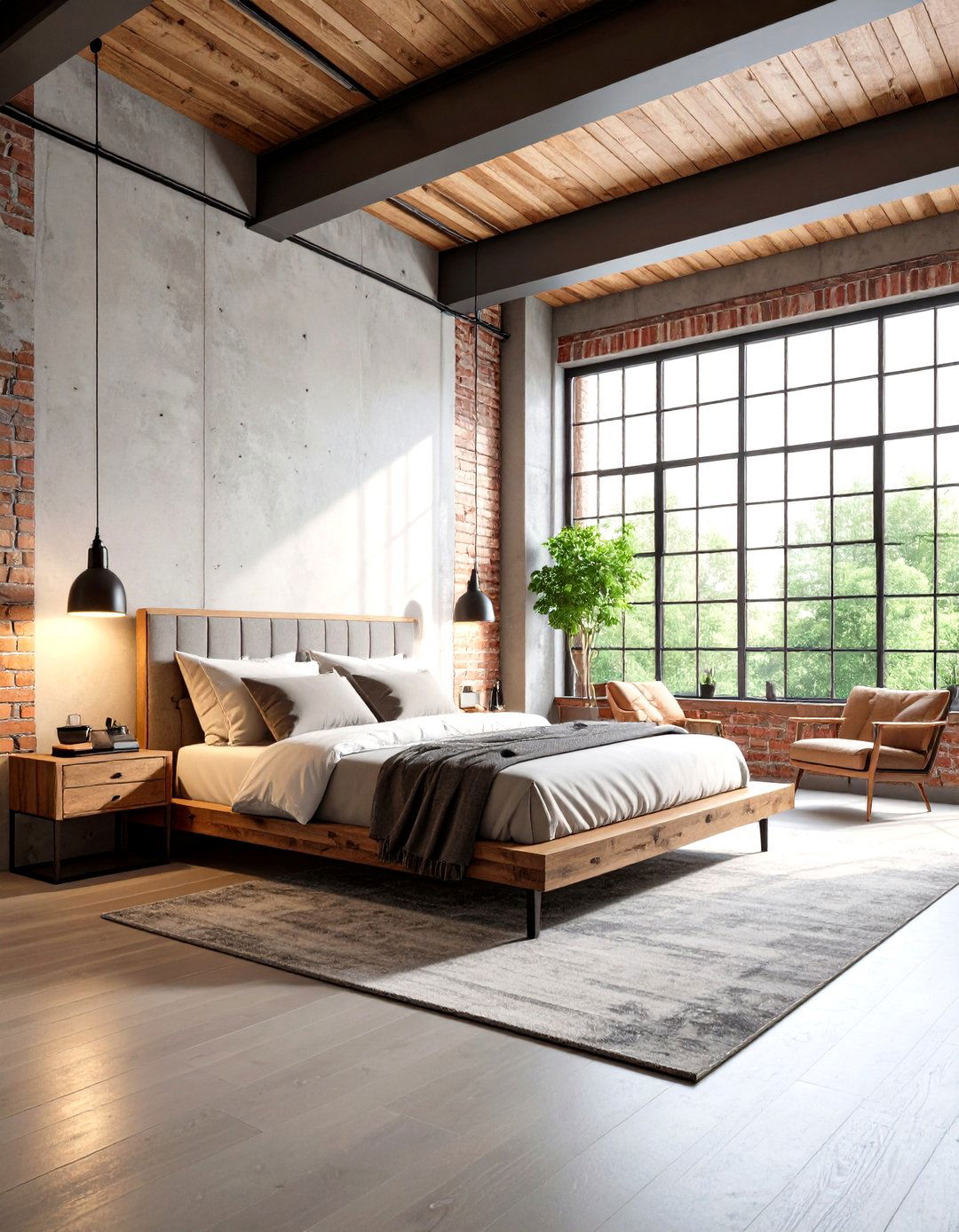
Urban chic hotel rooms embrace raw industrial elements like exposed brick walls, concrete surfaces, and metal fixtures that reflect contemporary city aesthetics. This design approach celebrates architectural honesty by showcasing structural elements rather than concealing them behind traditional finishes. Steel beam accents, factory-style lighting fixtures, and weathered wood furniture create sophisticated metropolitan environments that appeal to business travelers and urban explorers. Industrial elements combined with contemporary flair feature exposed brick walls, sleek furnishings, and bold accent pieces that create trendy, cosmopolitan atmospheres. Modern amenities are seamlessly integrated into the industrial framework through sleek technology installations and luxury comfort items that contrast beautifully with rougher architectural textures. Color schemes typically feature neutral grays, blacks, and whites punctuated by vibrant artwork or textiles.
6. Luxury Boutique Hotel Room Design with Artisanal Details
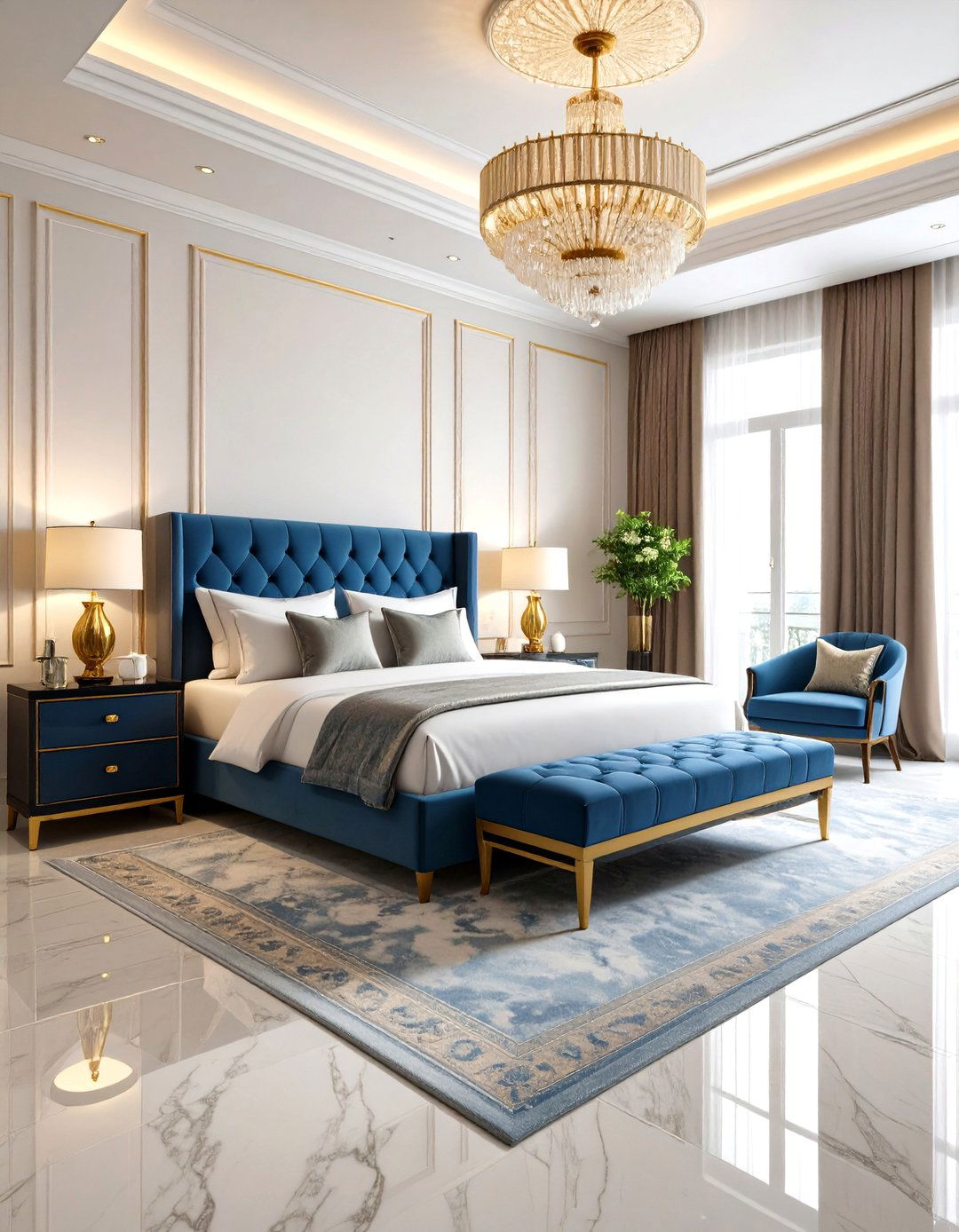
Luxury boutique hotel rooms showcase high-end materials, custom furnishings, and artistic elements that create unique, sophisticated environments tailored to discerning travelers. Artisanal details include hand-crafted furniture, bespoke lighting installations, and locally commissioned artwork that reflects the property's unique character and location. Design elements like sapphire accent furniture, large paintings, marble countertops, and gold finishes create distinct living areas with art deco-inspired aesthetics. These rooms focus on creating personalized experiences through one-off design elements that work in harmony with the building's architecture rather than standardized corporate aesthetics. Premium fabrics, custom millwork, and curated decorative objects transform spaces into gallery-like environments where every element has been thoughtfully selected. High-quality finishes and extraordinary design concepts showcase talent and innovation while exceeding expectations for luxury, elegance, and opulence.
7. Sustainable Eco-Friendly Hotel Room Design with Recycled Materials
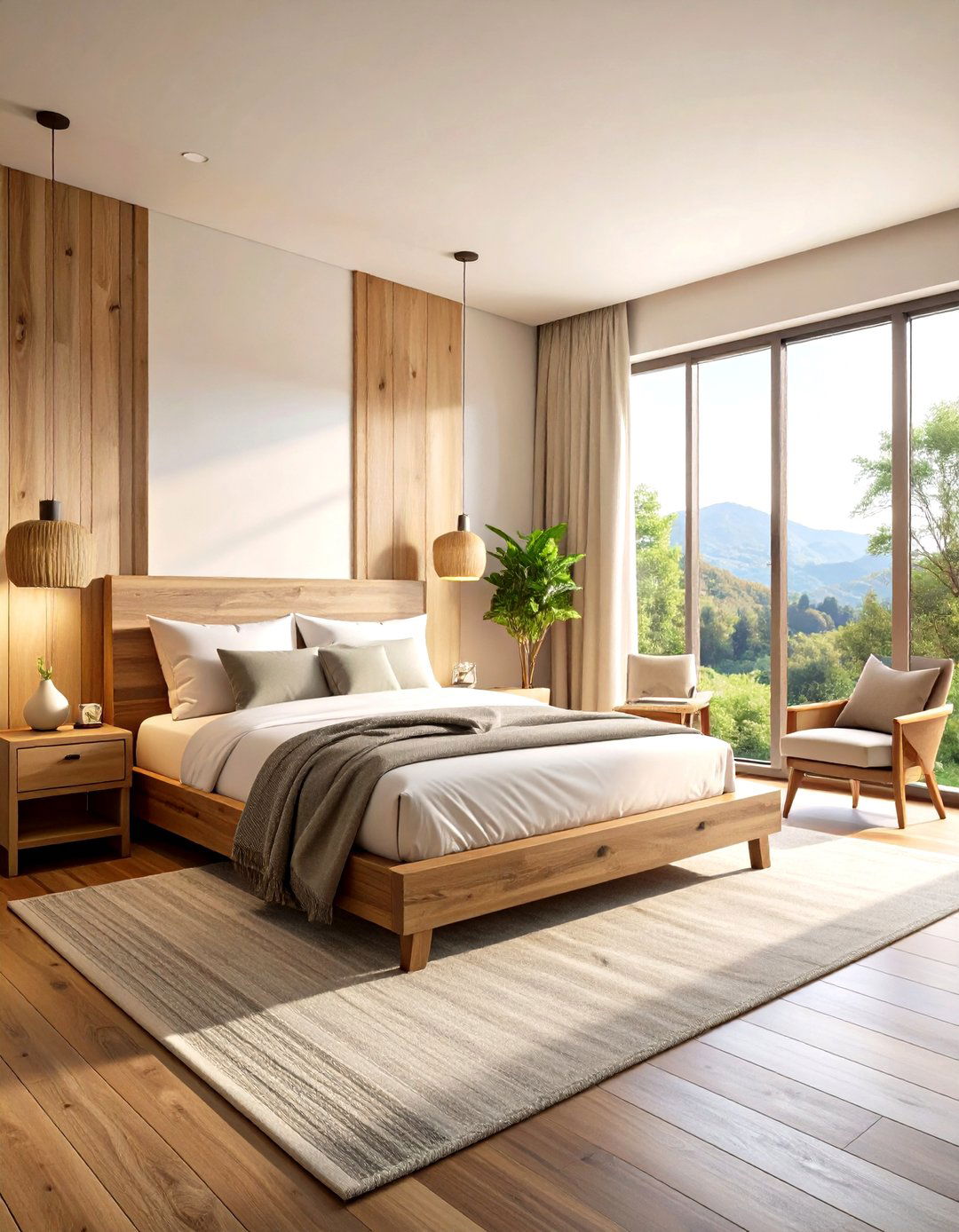
Addressing environmental consciousness among modern travelers, sustainable hotel room design incorporates recycled materials, energy-efficient systems, and locally sourced furnishings that minimize ecological impact. With 81% of travelers indicating plans to choose sustainable accommodations, demand for eco-friendly materials and design practices has surged significantly. Design elements include reclaimed wood furniture, organic cotton bedding, low-VOC paints, and LED lighting systems with motion sensors that automatically optimize energy consumption. Water-saving fixtures like aerated showerheads and low-flow faucets maintain performance while reducing resource usage without compromising guest comfort. Solar panel integration, rainwater harvesting systems, and locally crafted furnishings support regional economies while demonstrating environmental responsibility. These rooms appeal to eco-conscious guests while often resulting in operational cost savings for properties.
8. Cultural Heritage Hotel Room Design with Local Artisan Elements
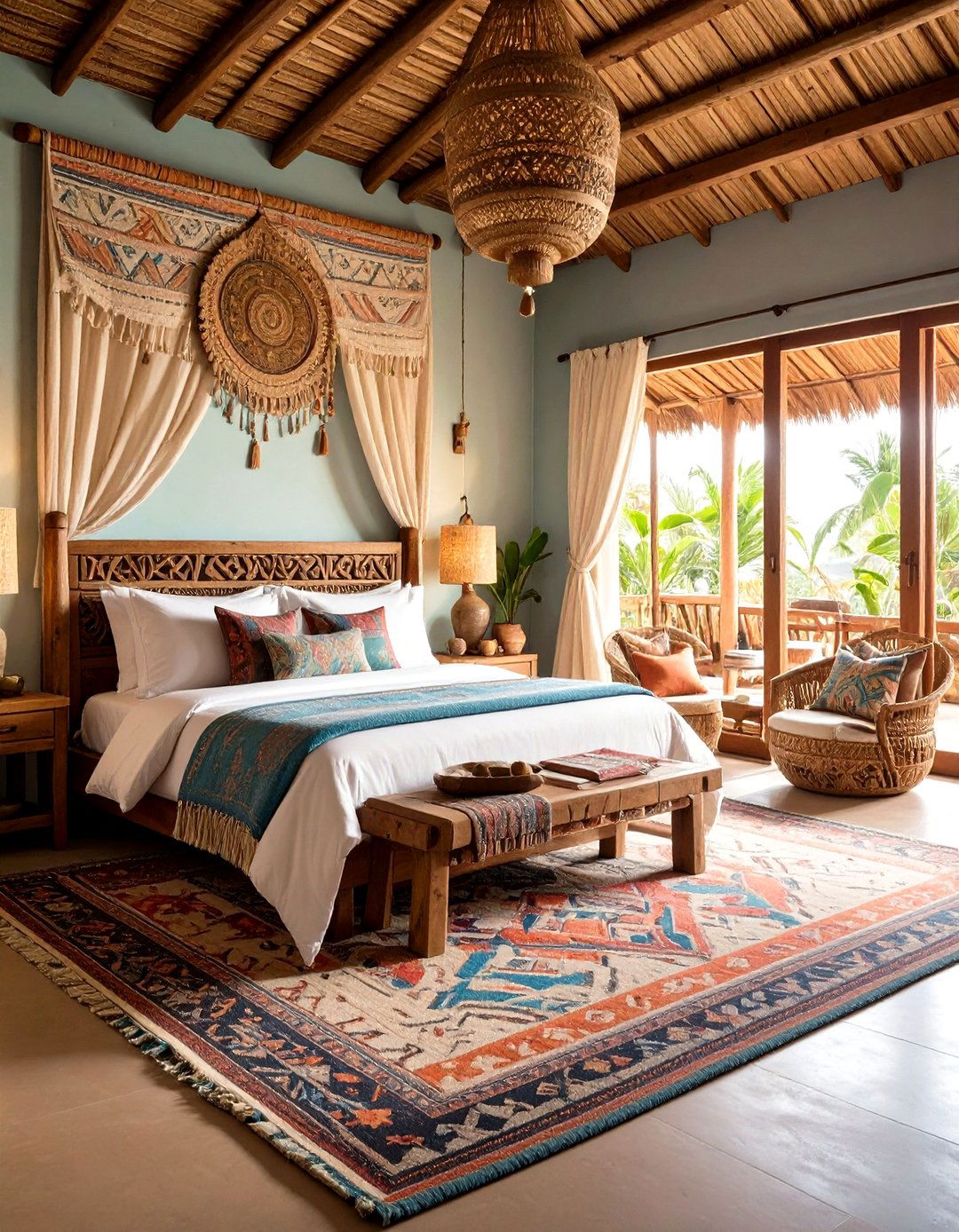
For guests seeking authentic experiences, cultural heritage hotel rooms integrate regional craftsmanship, traditional materials, and locally inspired design motifs that celebrate destination character. Hyper-local design preferences reflect unique destination character by integrating area artists and cultural themes that guests increasingly prefer over generic corporate aesthetics. Design elements include locally woven textiles, indigenous art installations, traditional building materials, and furnishings crafted by regional artisans using centuries-old techniques. Color palettes draw inspiration from local landscapes, architecture, and cultural symbols while maintaining contemporary comfort standards. These rooms serve as cultural ambassadors, educating guests about local traditions while supporting community economies through authentic design partnerships. Regional materials like natural stone, local hardwoods, and traditional ceramics create immersive environments that transform accommodation into cultural discovery experiences.
9. Modern Contemporary Hotel Room Design with Clean Architectural Lines
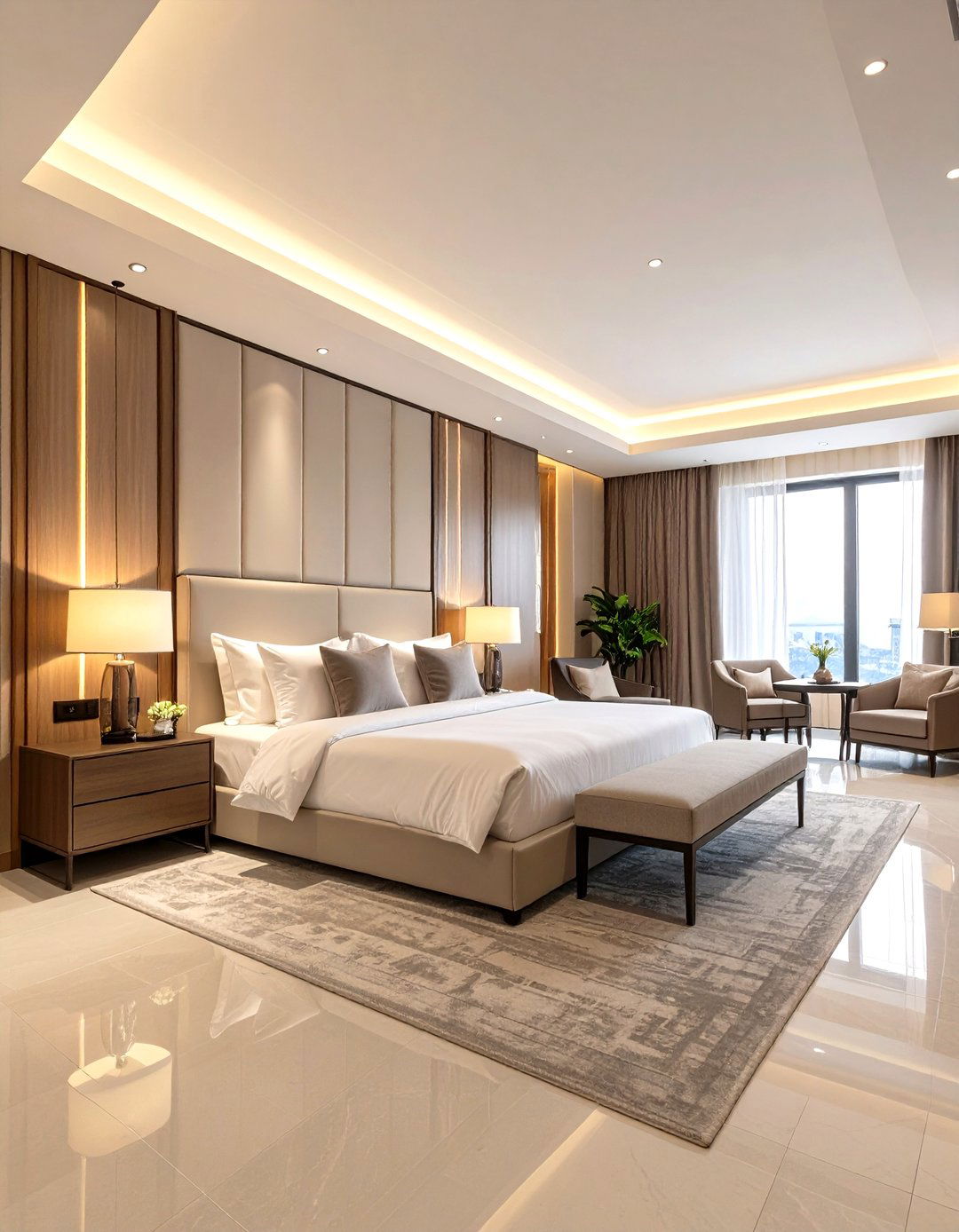
Contemporary hotel room design features clean lines, neutral color palettes, and luxurious accents that create sophisticated, timeless environments appealing to diverse guest demographics. This approach emphasizes sophisticated simplicity through carefully proportioned furniture, uncluttered surfaces, and strategic use of high-end materials like marble, brushed metals, and premium fabrics. Minimalist furniture selections include platform beds with built-in storage, multifunctional ottomans, and wall-mounted elements that maximize floor space while maintaining elegant aesthetics. Lighting design plays a crucial role through layered illumination systems that include ambient, task, and accent lighting controlled by smart dimming systems. Modern designs often feature thinner furniture lines and non-bulky fixtures that provide elegance without industrial or cookie-cutter appearances. Technology integration remains seamless and understated, supporting functionality without compromising visual tranquility.
10. Vintage Themed Hotel Room Design with Nostalgic Character Elements
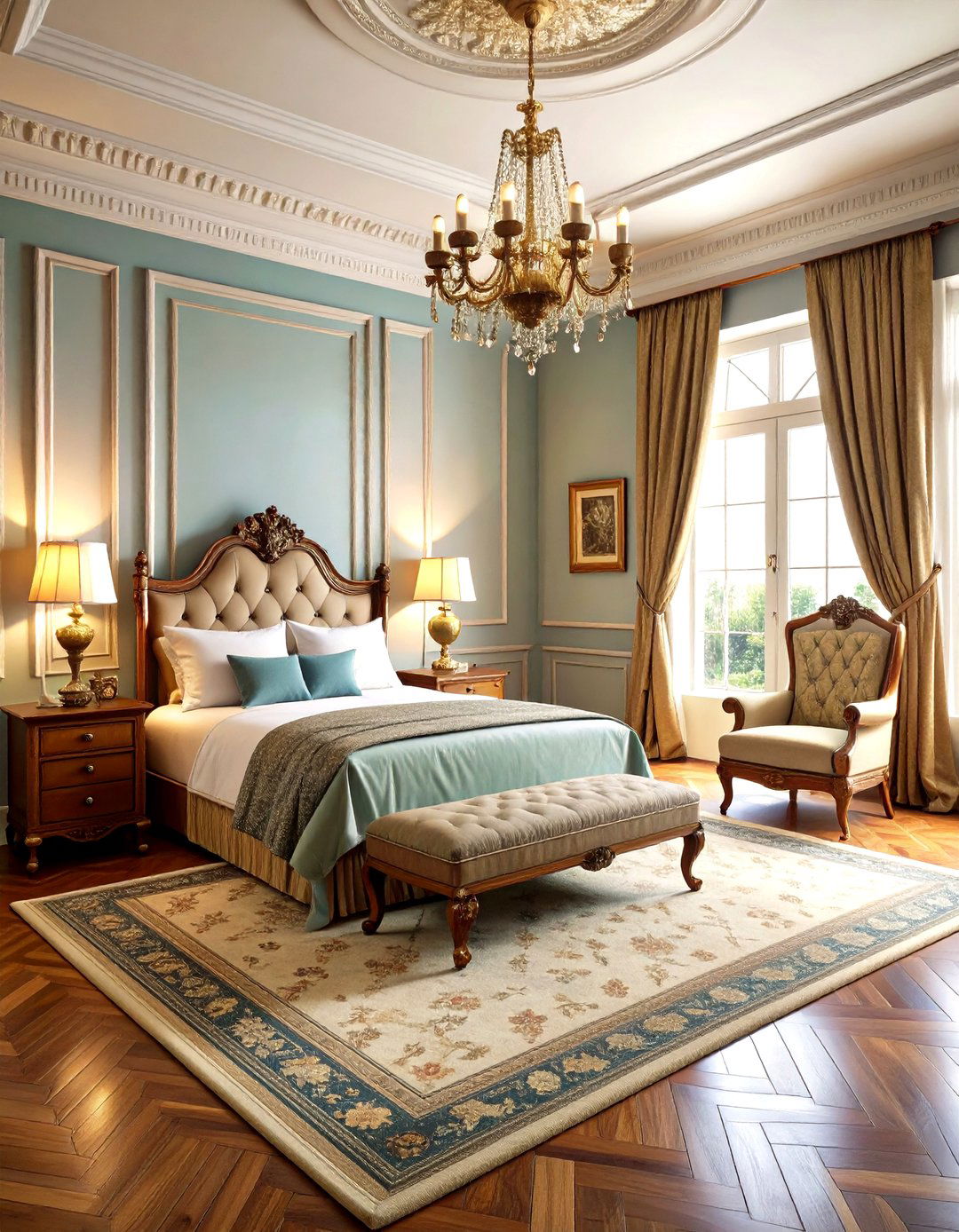
Vintage-themed hotel rooms embrace nostalgia and charm through ornate furnishings, antique accents, and retro décor elements that transport guests to bygone eras while maintaining modern comfort. Design approaches range from Art Deco glamour with geometric patterns and metallic finishes to mid-century modern aesthetics featuring iconic furniture silhouettes and bold color combinations. Authentic vintage pieces are carefully curated and restored, while reproduction furniture maintains period authenticity without compromising durability. Traditional bedroom design returns with nostalgic elements, but featuring cleaner lines instead of overly collected aesthetics that can overwhelm smaller spaces. Wallpaper patterns, vintage lighting fixtures, and period-appropriate textiles create immersive historical environments. Modern amenities are discretely integrated to maintain period illusion while ensuring contemporary convenience standards. These rooms appeal to travelers seeking unique character experiences beyond standard hotel offerings.
11. Coastal Beach Hotel Room Design with Ocean-Inspired Elements

Coastal-themed hotel rooms incorporate light, airy colors, natural textures, and nautical accents that evoke beachside relaxation and tranquility for guests seeking oceanic escape experiences. Design palettes emphasize soft blues, sandy beiges, and crisp whites that reflect natural coastal environments while maximizing natural light reflection throughout spaces. Natural materials like weathered wood, rope accents, jute textiles, and sea glass decorative elements create authentic maritime atmospheres. Furniture selections include light-colored woods, wicker seating, and linen upholstery that evoke casual beachside living while maintaining sophisticated hotel standards. Window treatments maximize ocean views while providing privacy through natural materials like bamboo or linen that complement the coastal aesthetic. Bathroom designs often feature pebble tile accents, driftwood mirrors, and sea-inspired color schemes that extend the oceanic theme throughout the entire accommodation experience.
12. Art Gallery Hotel Room Design with Curated Exhibition Spaces
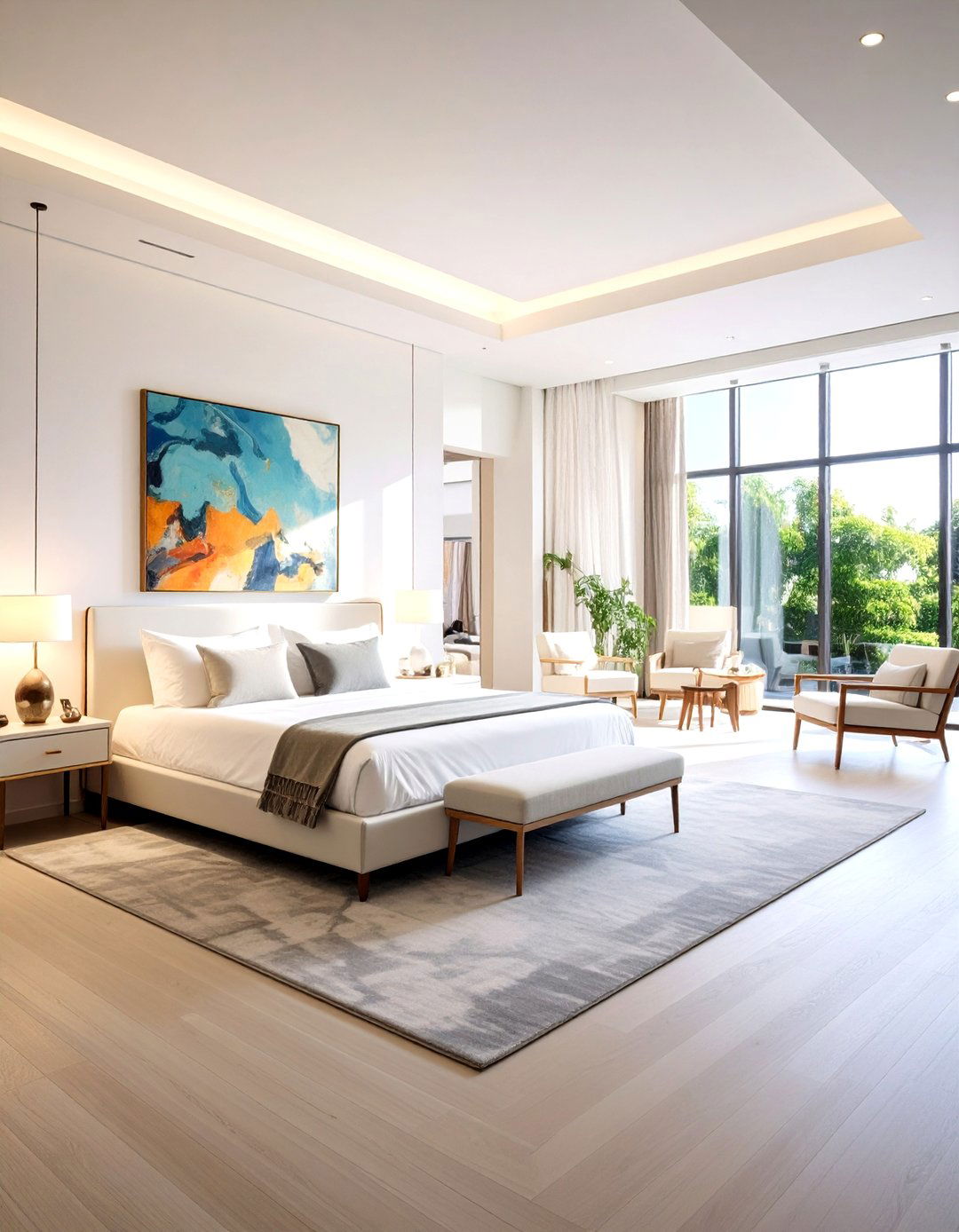
Transforming accommodations into rotating gallery experiences, these hotel rooms feature professionally curated artwork, gallery-style lighting, and museum-quality display systems that create cultural immersion opportunities. Luxury hotels increasingly integrate art into design, showcasing unique and thought-provoking pieces throughout properties with gallery-style walls, custom installations, and bespoke artworks that reflect personality and interests. Wall-mounted track lighting systems allow for artwork rotation while maintaining optimal viewing conditions for different media types and sizes. Partnerships with local galleries, emerging artists, and cultural institutions provide fresh content that keeps rooms feeling dynamic and current. Furnishings are selected to complement rather than compete with artistic focal points, often featuring neutral colors and clean lines that serve as sophisticated backdrops. These rooms appeal to culturally minded travelers while supporting arts communities through exhibition opportunities and artwork sales.
13. Flexible Multi-Purpose Hotel Room Design with Adaptable Furniture
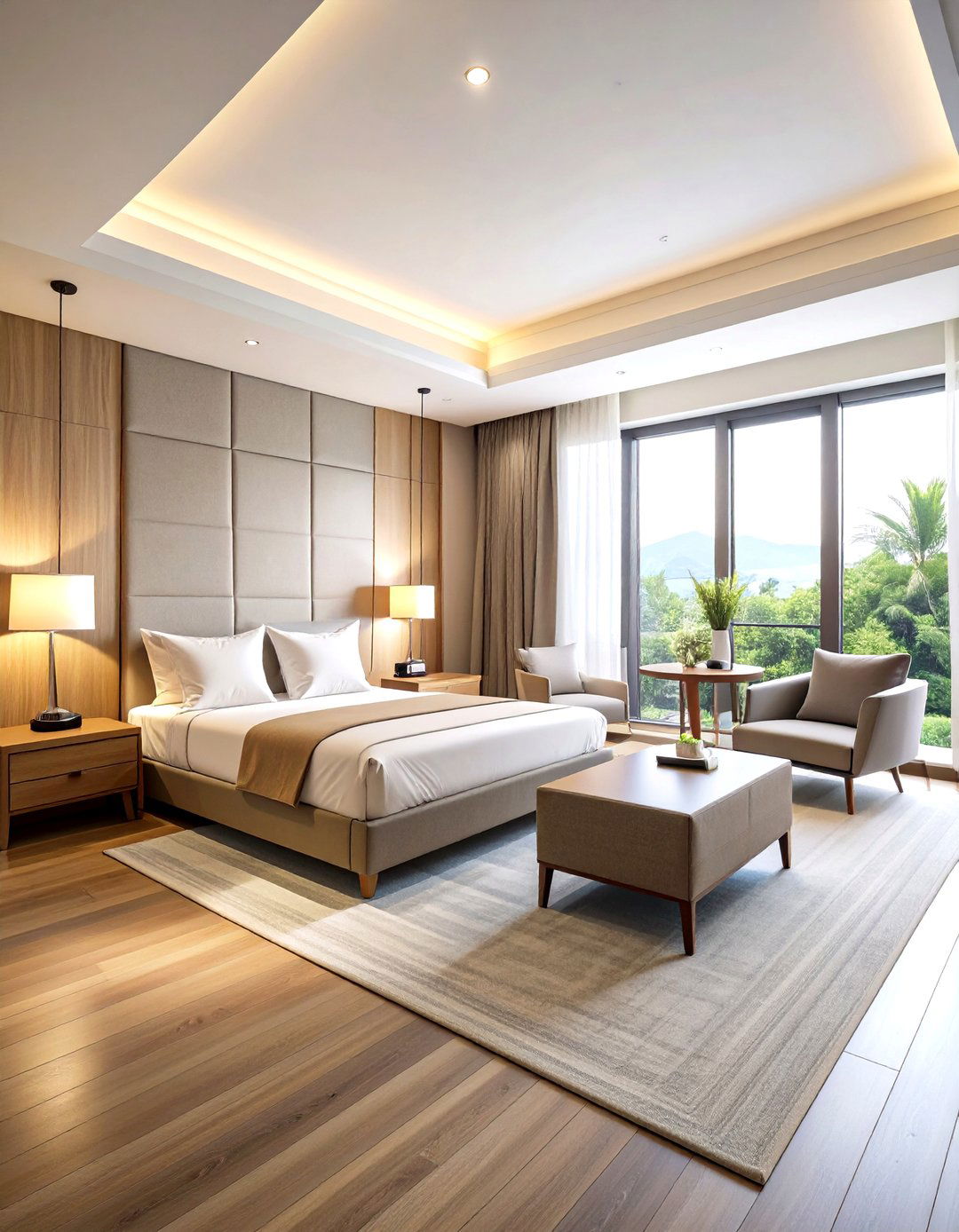
With 42% of individuals using hotels as workspaces, demand for flexible accommodations that seamlessly transition between leisure and business functions continues growing among remote workers and business travelers. Adaptable furniture systems include murphy beds that fold into walls, modular seating that reconfigures for meetings or relaxation, and height-adjustable work surfaces that accommodate various activities. Flexible spaces with movable furniture and adaptable layouts serve multiple purposes, addressing changing travel patterns and diverse guest needs. Storage solutions are integrated throughout, including ottoman storage, under-bed drawers, and wall-mounted organizational systems that keep spaces uncluttered regardless of current configuration. Technology infrastructure supports both entertainment and productivity needs through multiple charging stations, high-speed connectivity, and versatile display options. These rooms maximize value for hotels by accommodating various guest types while minimizing the need for dedicated business centers or meeting spaces.
14. Wellness Sleep-Focused Hotel Room Design with Circadian Lighting

Responding to sleep tourism trends, these specialized hotel rooms prioritize restorative rest through advanced lighting systems, premium sleep surfaces, and environmental controls that optimize natural sleep cycles. Sleep tourism emerges as travelers recognize that quality rest should be prioritized, leading hotels to invest in high-quality mattresses and bedding as essential amenities. Circadian lighting systems automatically adjust color temperature and intensity throughout the day, supporting natural melatonin production and reducing jet lag effects. Sound-dampening materials, including specialized wall insulation and heavy window treatments, create quiet sanctuaries that block external disturbances. Temperature control systems maintain optimal sleeping conditions while advanced air filtration removes allergens and pollutants. Premium bedding includes organic cotton linens, temperature-regulating mattress technologies, and multiple pillow options to accommodate different sleep preferences. These rooms command premium rates while delivering measurable wellness benefits.
15. Historic Renovation Hotel Room Design with Preserved Architectural Features
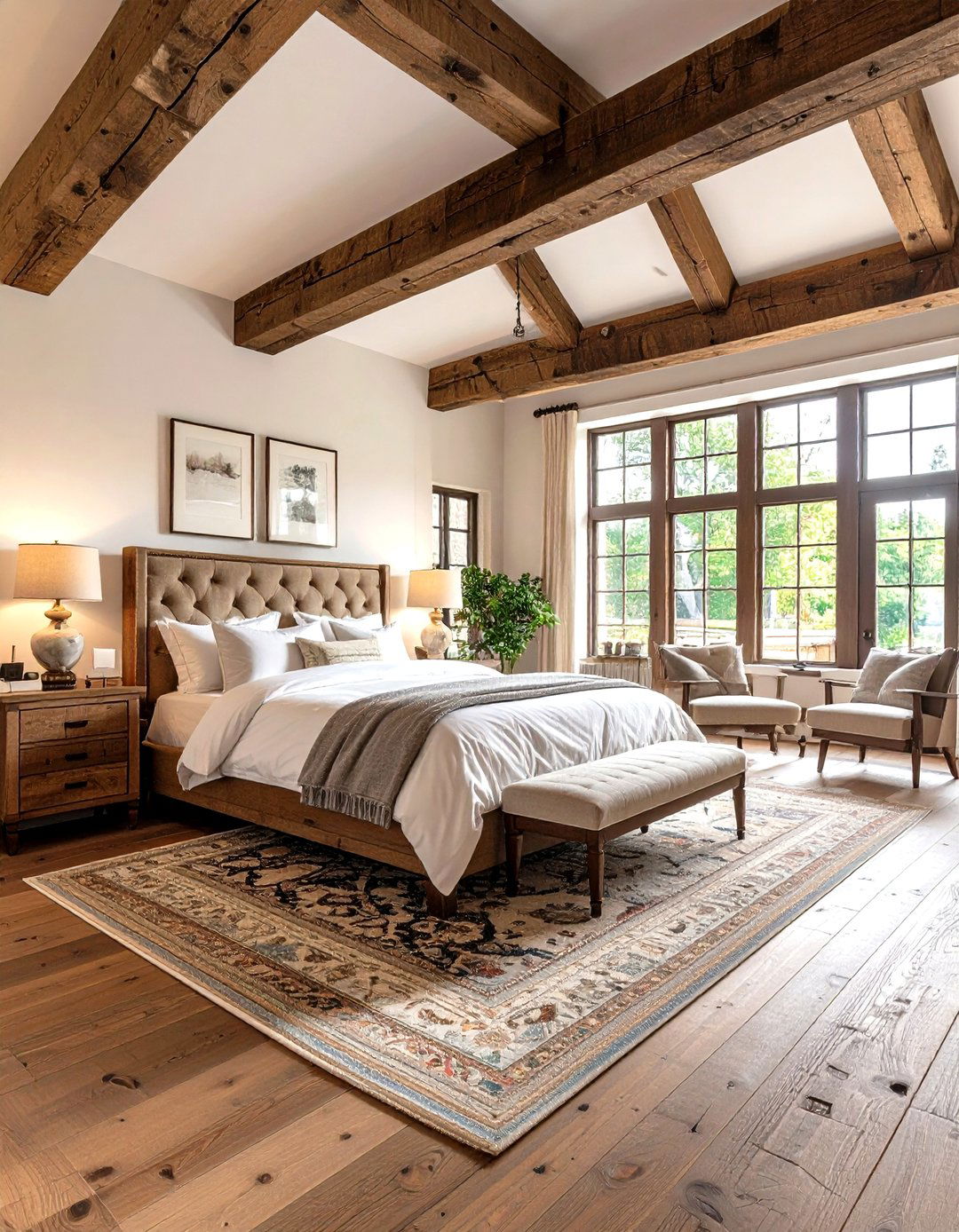
Celebrating building heritage while meeting contemporary hospitality standards, these hotel rooms preserve historic architectural elements like exposed beams, original windows, and period millwork while integrating modern amenities. Historic renovations balance preservation requirements with luxury accommodations, transforming landmark buildings into unique hospitality destinations that honor architectural heritage. Design approaches respect original proportions and materials while introducing contemporary comfort through careful interventions like discrete climate control, modern bathrooms, and updated electrical systems. Period-appropriate furnishings are mixed with contemporary pieces that complement rather than clash with historic character. Lighting design highlights architectural features while providing adequate illumination for modern activities. These rooms offer unique character that cannot be replicated in new construction, appealing to travelers seeking authentic experiences. Successful historic hotel renovations often become cultural destinations themselves, contributing to neighborhood revitalization and heritage preservation efforts.
16. Maximalist Luxury Hotel Room Design with Bold Pattern Integration

Contrary to minimalist trends, maximalist hotel rooms embrace abundant color, pattern, and texture combinations that create visually stimulating, personality-rich environments for guests seeking dramatic design experiences. Maximalism embraces the idea that more is more, with layers of colors, patterns, and textures composing rich, vibrant spaces filled with personality and decorative diversity. Design strategies include mixing different eras, styles, and cultural influences through carefully curated combinations that feel intentional rather than chaotic. Rich jewel tones, ornate wallpapers, layered textiles, and eclectic furniture selections create immersive environments that encourage exploration and conversation. Textured fabrics like velvet in vibrant jewel tones such as emerald and topaz add luxury while creating universal appeal for both leisure and business travelers. Successful maximalist design requires skilled curation to achieve balance while maintaining sophisticated hospitality standards that appeal to design-conscious travelers seeking unique visual experiences.
17. Zen Meditation Hotel Room Design with Mindfulness Elements
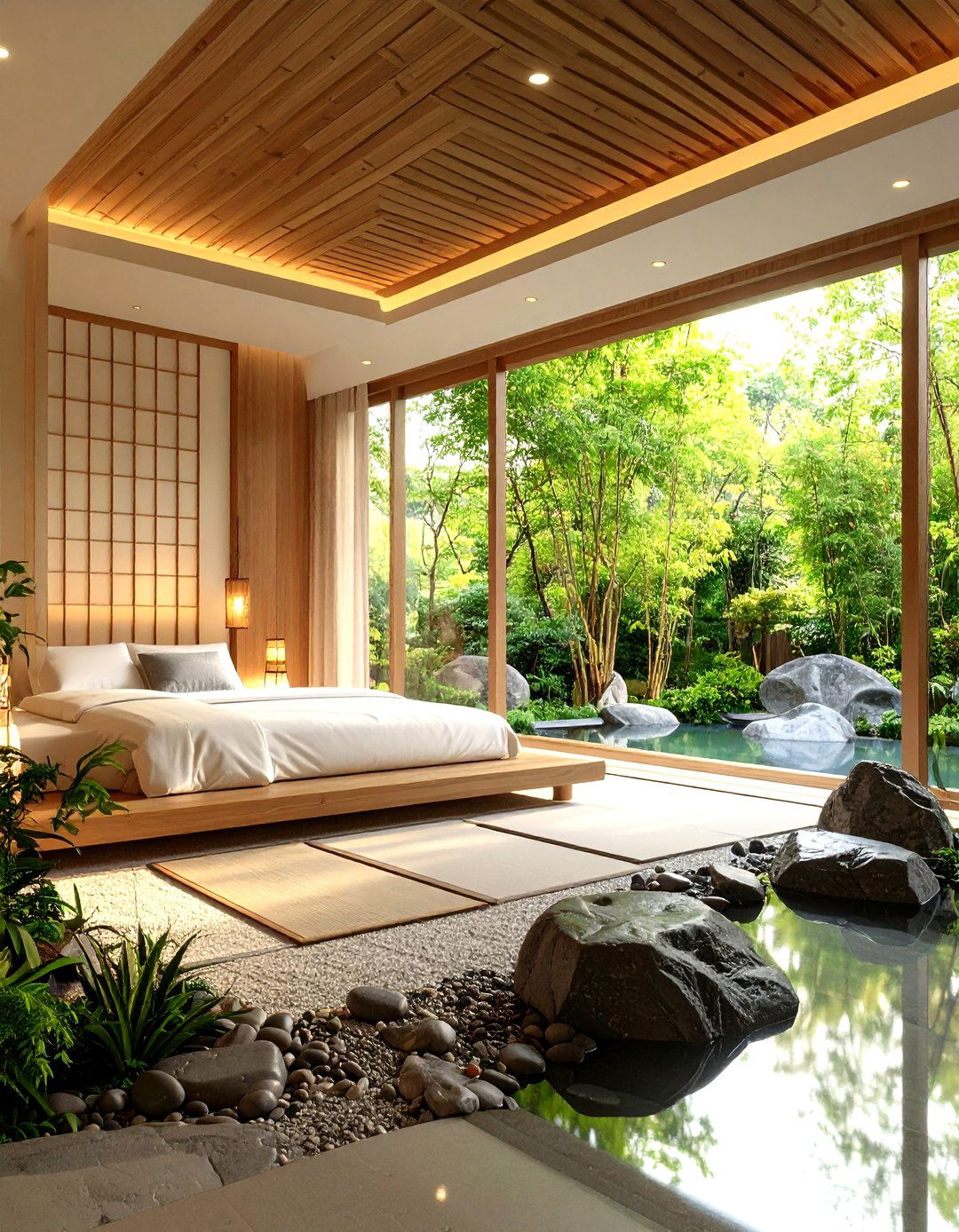
Addressing wellness tourism growth, zen-inspired hotel rooms create serene environments that support meditation, mindfulness practice, and stress reduction through carefully designed spatial and material choices. Design elements include meditation corner seating, natural materials like bamboo and stone, and water features that provide soothing background sounds. Wellness tourism market size is expected to reach over $1 trillion in 2025, with travelers planning holidays specifically focused on emotional well-being and stress reduction. Color palettes emphasize calming earth tones, soft whites, and natural wood finishes that promote tranquility and mental clarity. Lighting design includes adjustable systems that support different meditation practices and times of day. Clutter-free environments with minimal decorative elements reduce visual stimulation while providing essential comfort amenities. These rooms often include guided meditation resources, aromatherapy systems, and sound masking technologies that create optimal conditions for relaxation and inner reflection.
18. Tech-Forward Hotel Room Design with AI-Powered Personalization
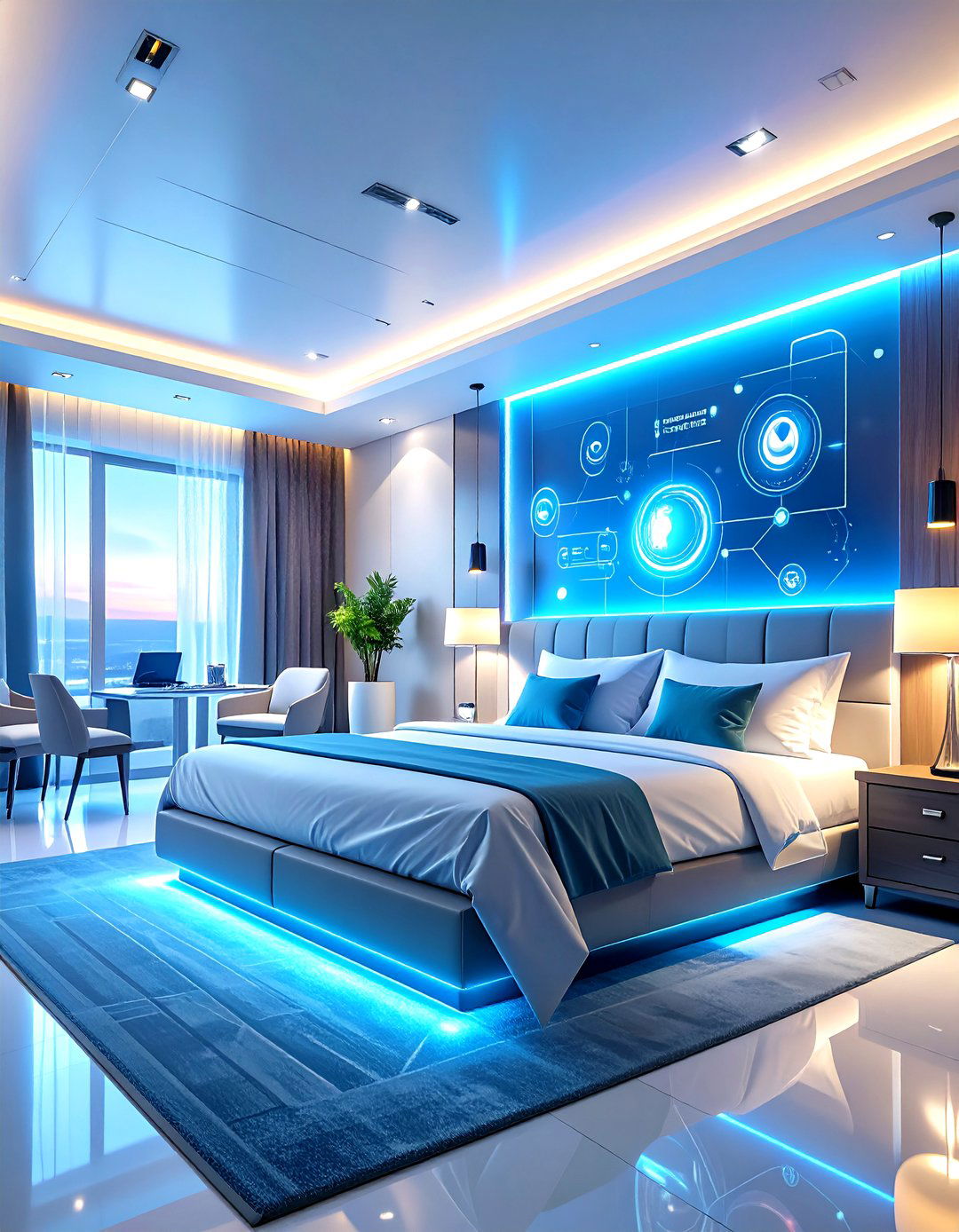
Beyond basic smart room technology, AI-powered hotel rooms learn individual guest preferences and proactively adjust environments based on behavior patterns, arrival times, and expressed preferences from previous stays. AI-driven systems implement personalized guest experiences, predictive analytics for service optimization, and smart room functionalities that create 24/7 concierge experiences tailored to individual needs. Machine learning algorithms analyze data from multiple touchpoints to predict preferences for temperature, lighting, entertainment, and service timing. Voice recognition systems distinguish between different guests in shared accommodations, maintaining individual preference profiles. Advanced interfaces and enhanced data analytics create more intuitive experiences while maintaining strong emphasis on security and privacy protection. Predictive maintenance systems identify potential equipment issues before they impact guest experiences. These rooms represent the future of hospitality technology, delivering truly personalized experiences that anticipate rather than simply respond to guest needs.
19. Outdoor-Indoor Hotel Room Design with Seamless Transition Spaces
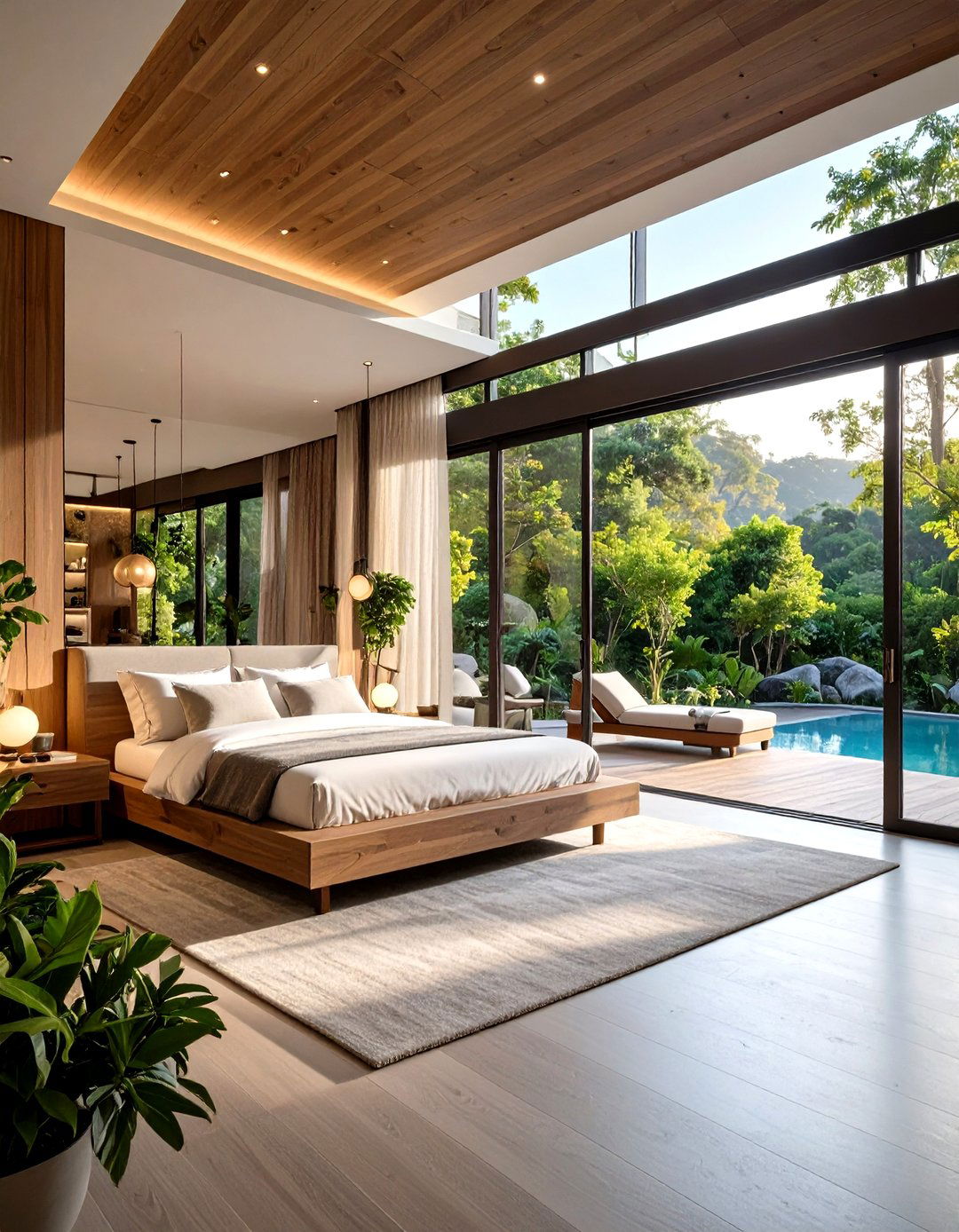
Blurring boundaries between interior and exterior environments, these hotel rooms feature retractable glass walls, covered outdoor spaces, and design elements that create seamless flow between indoor comfort and outdoor experiences. Innovative hotel design concepts blur boundaries between indoor and outdoor spaces, maximizing natural lighting and using raw natural materials to make hotels part of nature. Design approaches include covered terraces that function as extended living spaces, bathroom facilities that open to private courtyards, and bedroom areas with operable walls that expand into outdoor sleeping areas during favorable weather. Natural materials like stone, wood, and metal are used both inside and outside to create visual continuity. Plant selections and landscaping extend interior design themes into outdoor areas while providing privacy screening. These rooms particularly appeal to guests in temperate climates seeking to maximize connection with natural environments while maintaining luxury accommodation standards.
20. Boutique Luxury Hotel Room Design with Custom Artisan Furniture
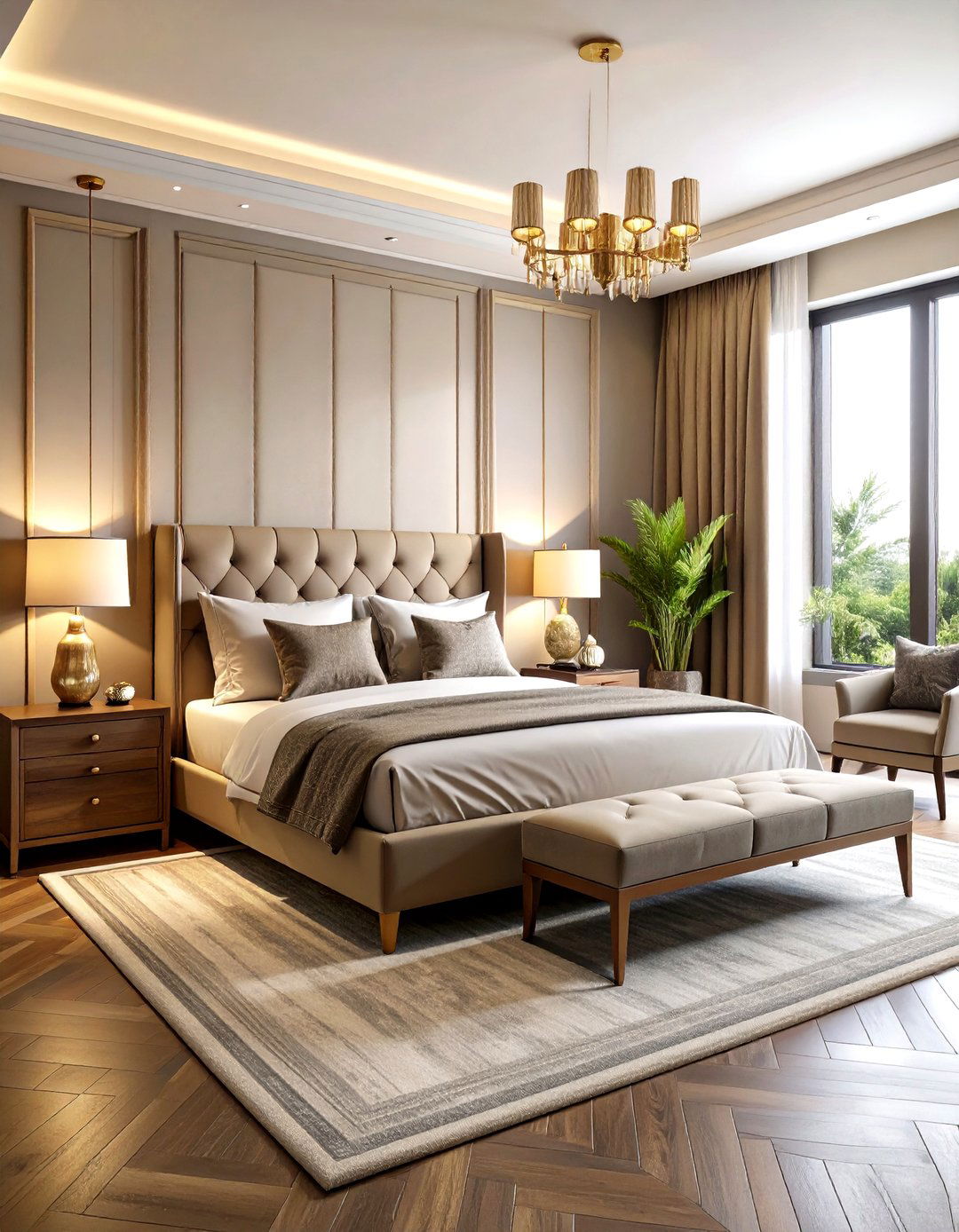
Creating truly unique accommodation experiences, these hotel rooms feature completely custom-designed furniture, fixtures, and decorative elements crafted specifically for each space by skilled artisans and furniture makers. Boutique hotel design emphasizes craft and detail appreciation through hand-crafted items with buckles, straps, intricate stitching, and fine details that capture attention and show thoughtful curation. Design processes involve collaboration between interior designers and local craftspeople to create one-of-a-kind pieces that reflect both aesthetic vision and regional manufacturing traditions. Brass fixtures in various finishes including polished, brushed, and matte create luxury character while providing warm colors that enhance cozy feelings in guest accommodations. Every element from bed frames to lighting fixtures receives custom treatment, resulting in rooms that function as design showcases while maintaining practical hospitality requirements. These rooms command premium rates while supporting local artisan communities and creating Instagram-worthy spaces that drive social media marketing value.
Conclusion:
Today's hotel room design landscape prioritizes personalization, sustainability, and technological integration while celebrating local culture and supporting guest wellness. From biophilic environments that reconnect travelers with nature to AI-powered smart rooms that anticipate guest needs, innovative design approaches transform accommodations into memorable destinations themselves. Successful hotel design focuses on art, community, and uniqueness, with guests craving design that echoes destination character through local art, architecture, and creative spaces. The most effective designs balance aesthetic innovation with operational efficiency, creating environments that satisfy diverse traveler preferences while supporting business objectives and environmental responsibility.


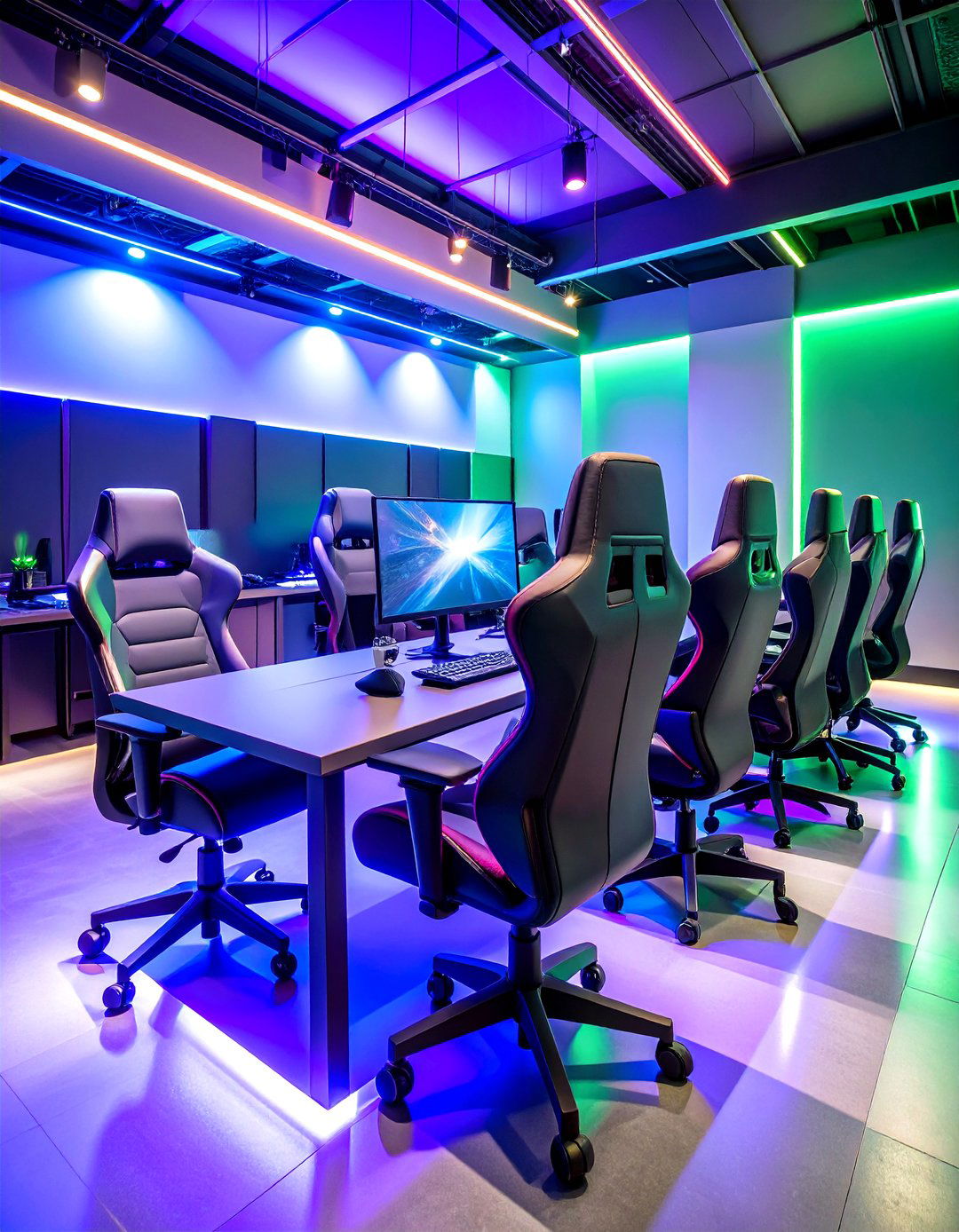
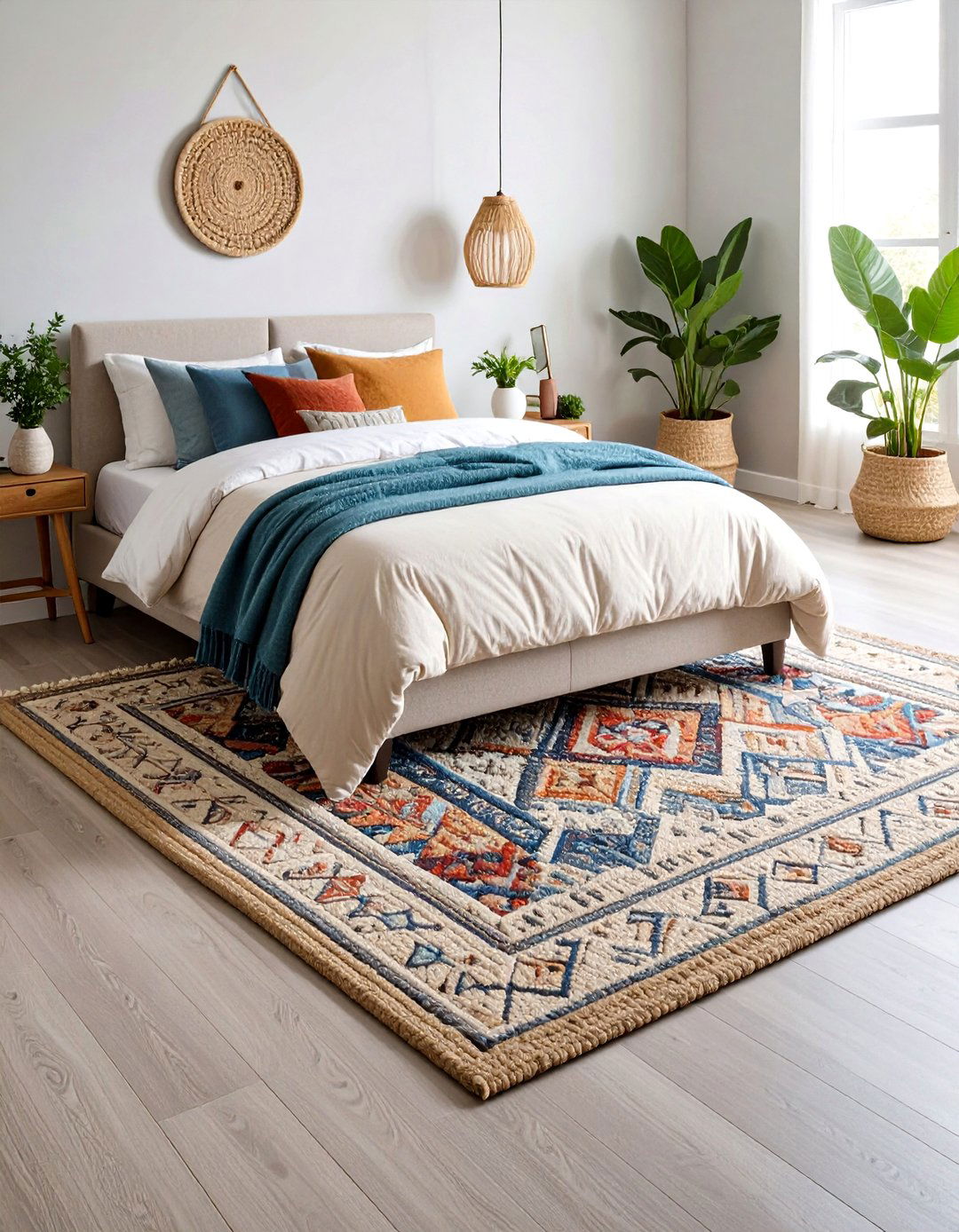
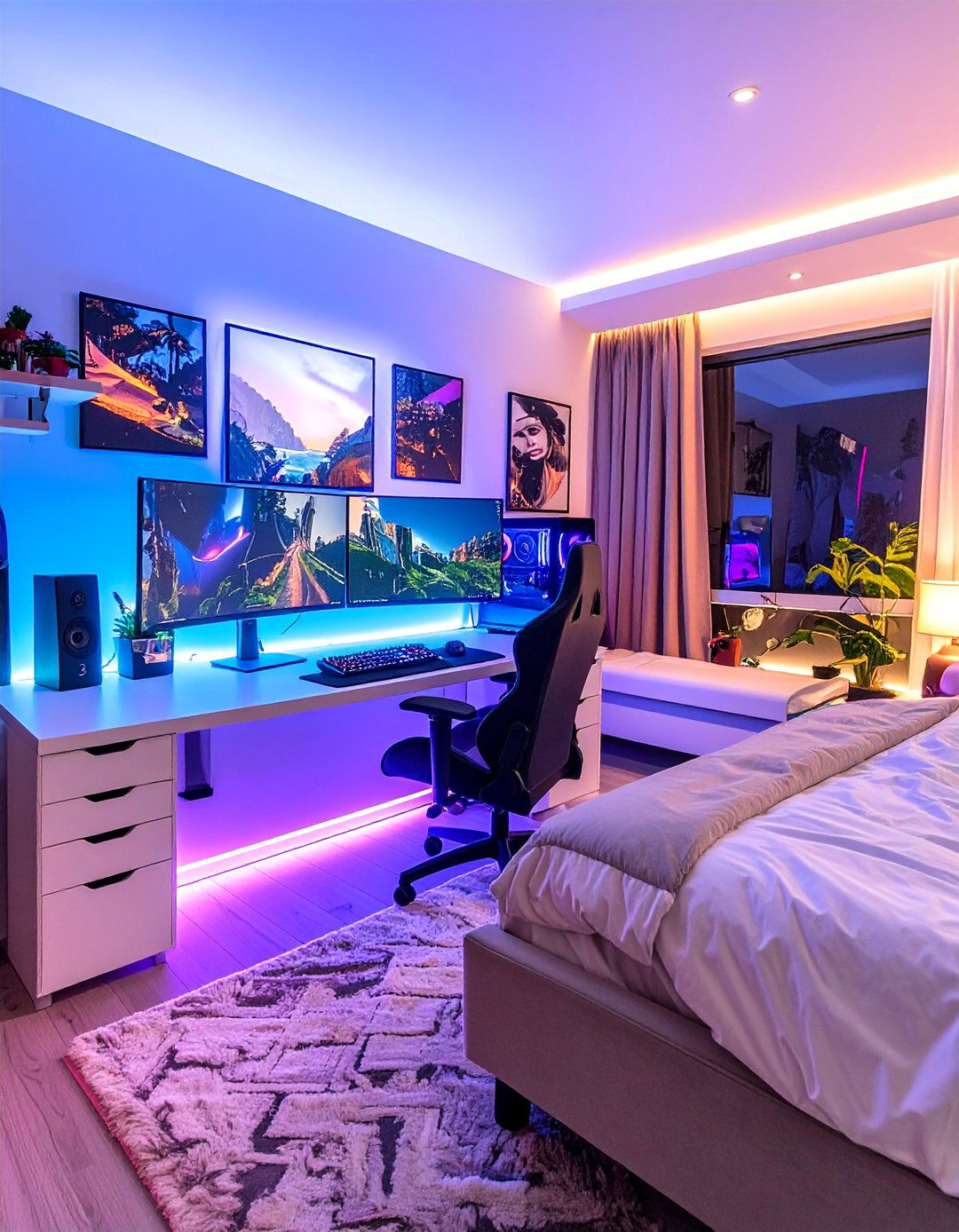

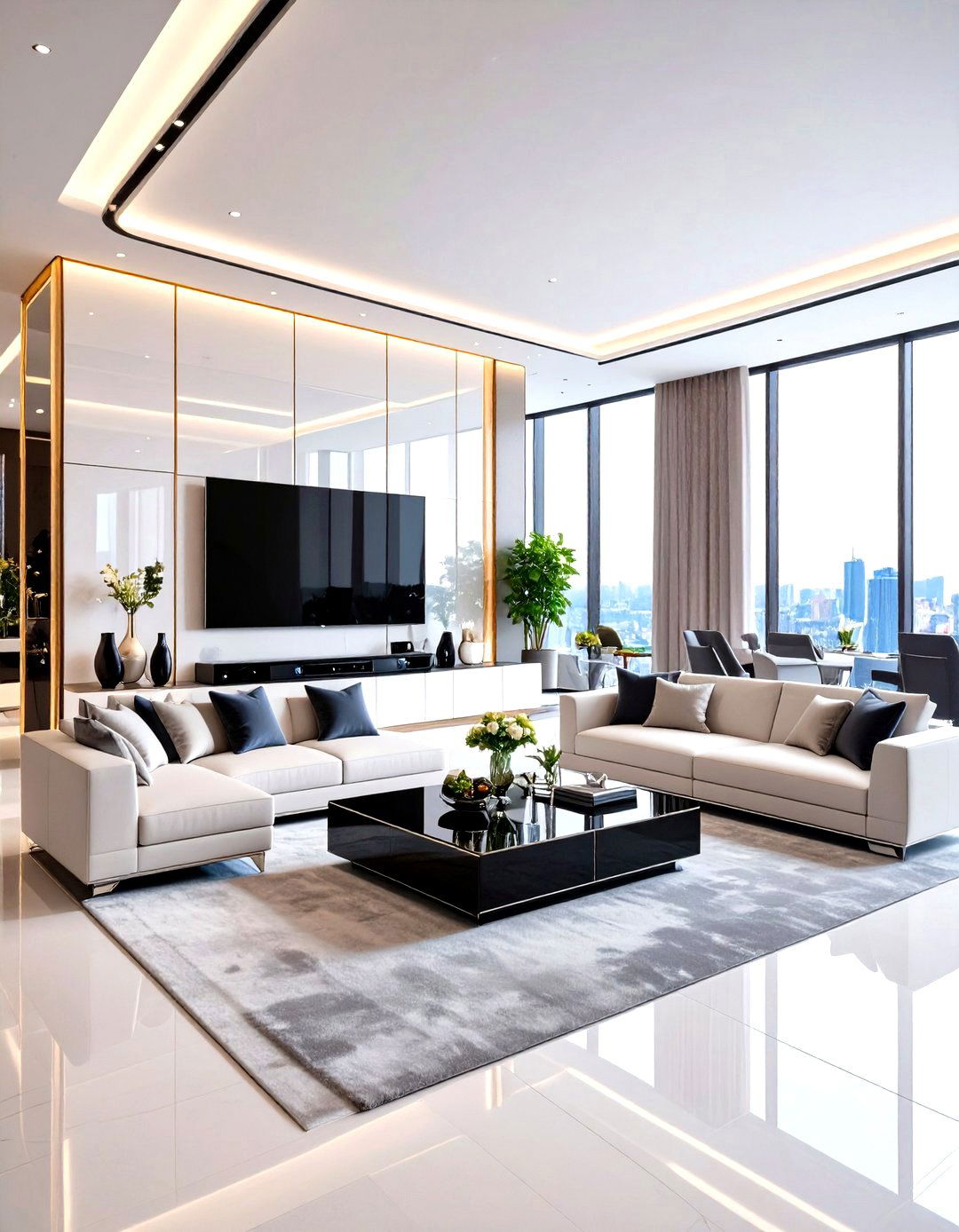
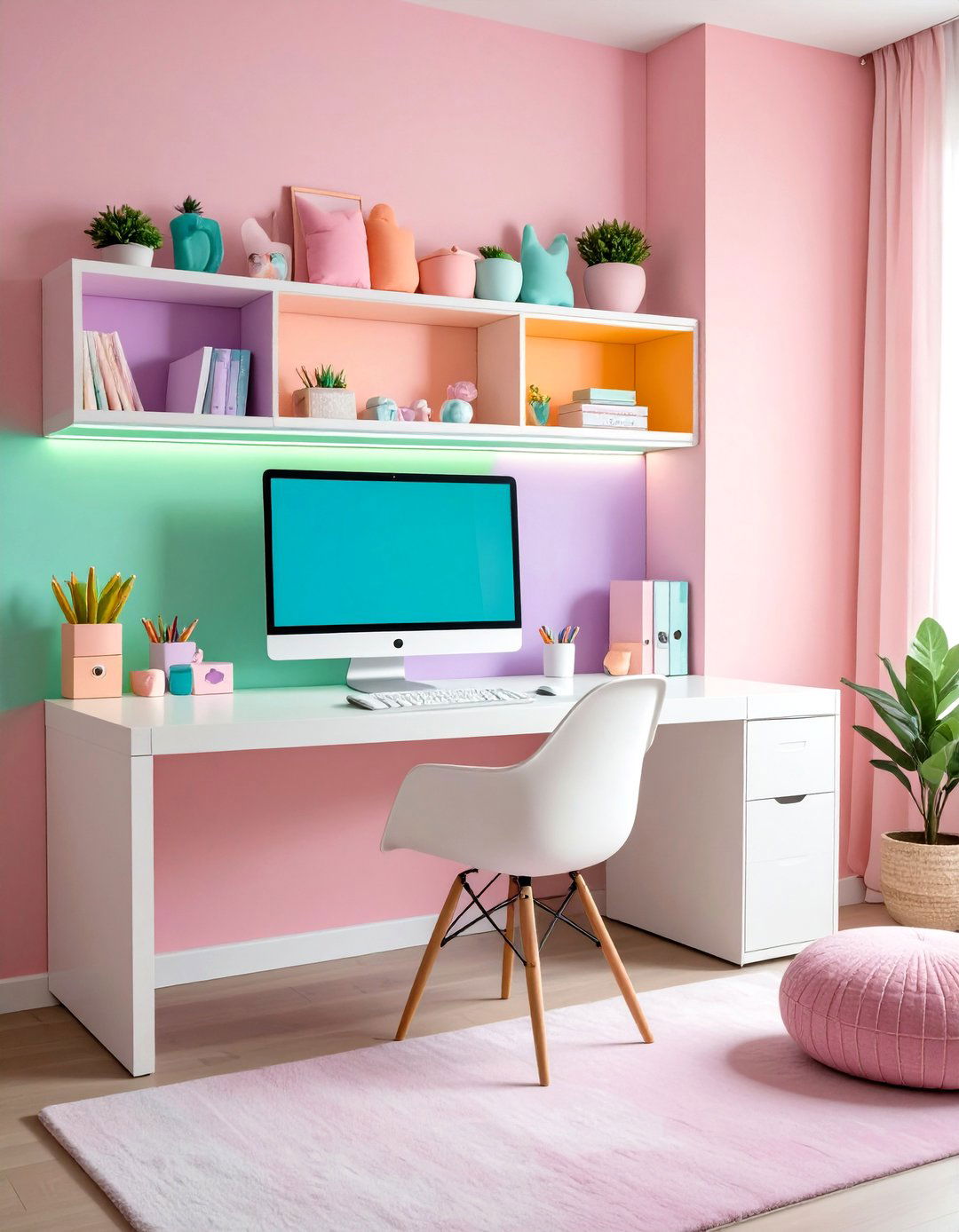
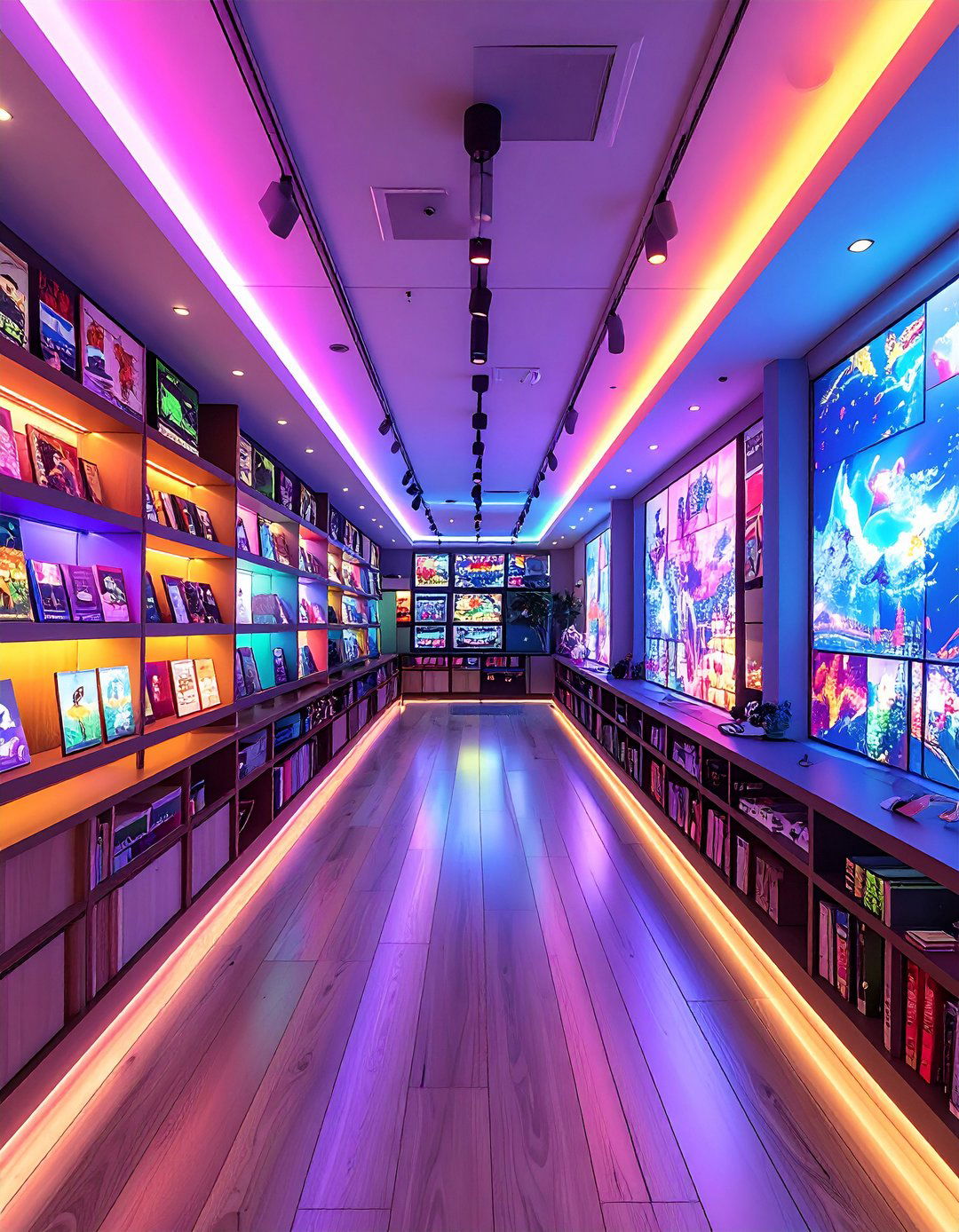
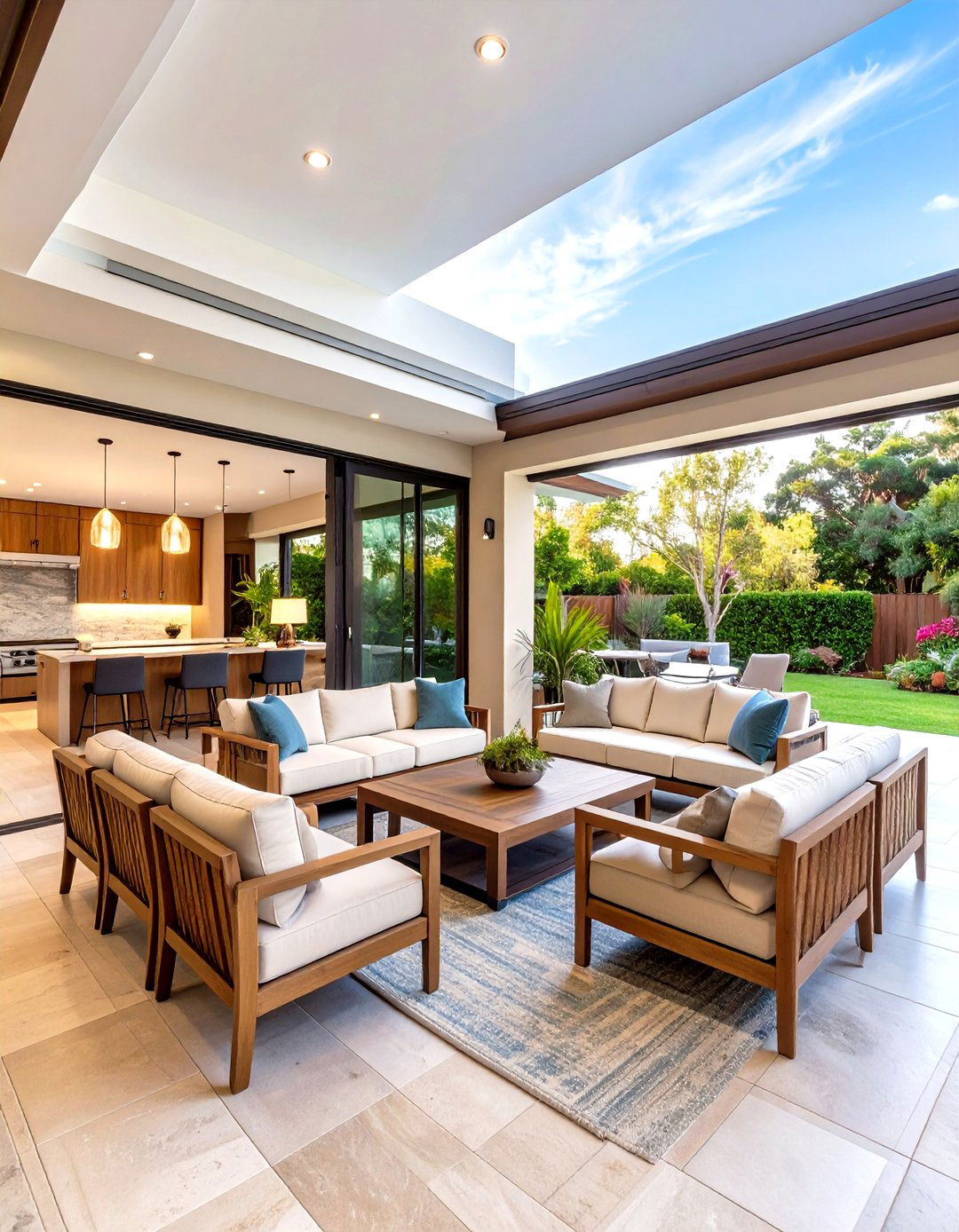
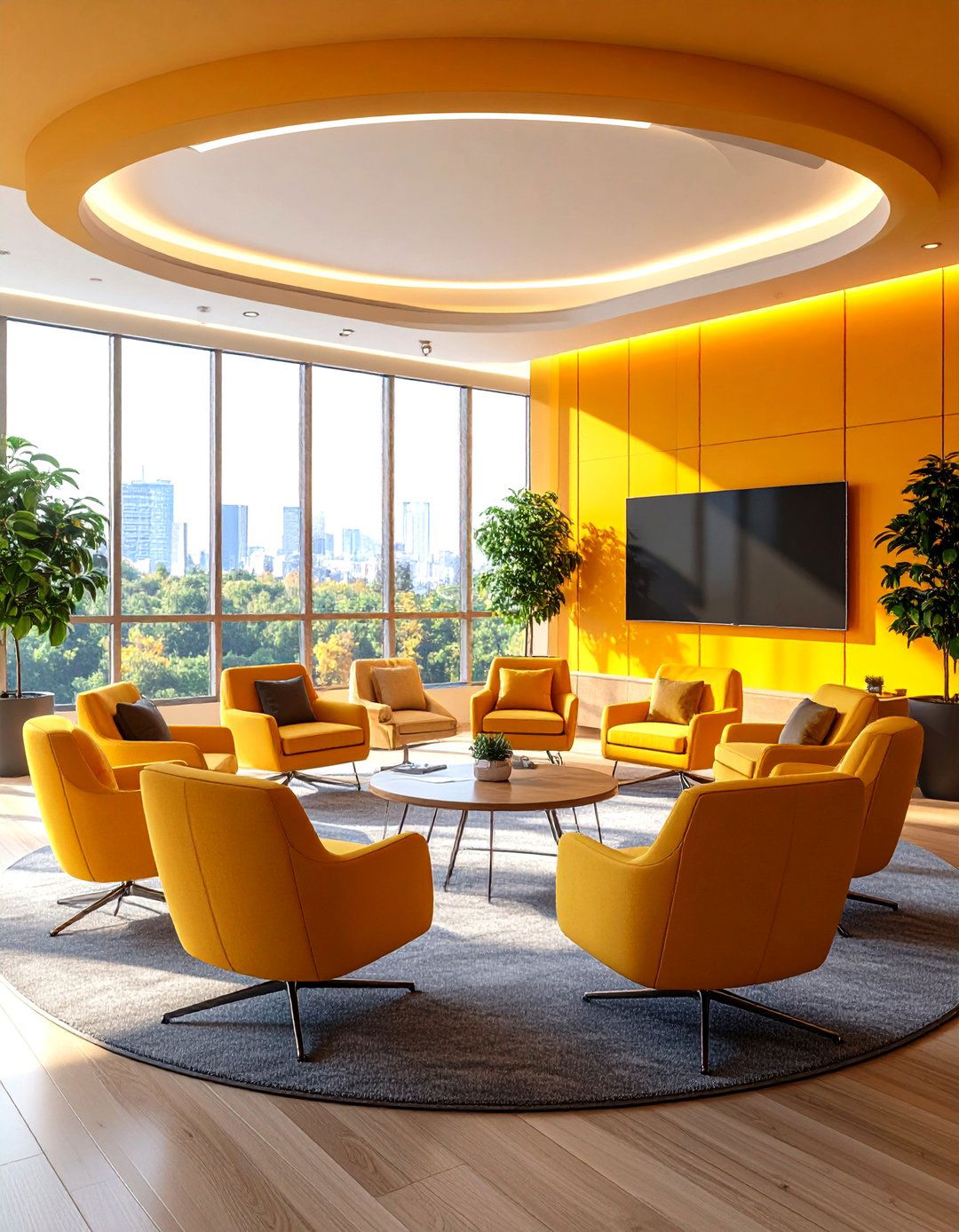
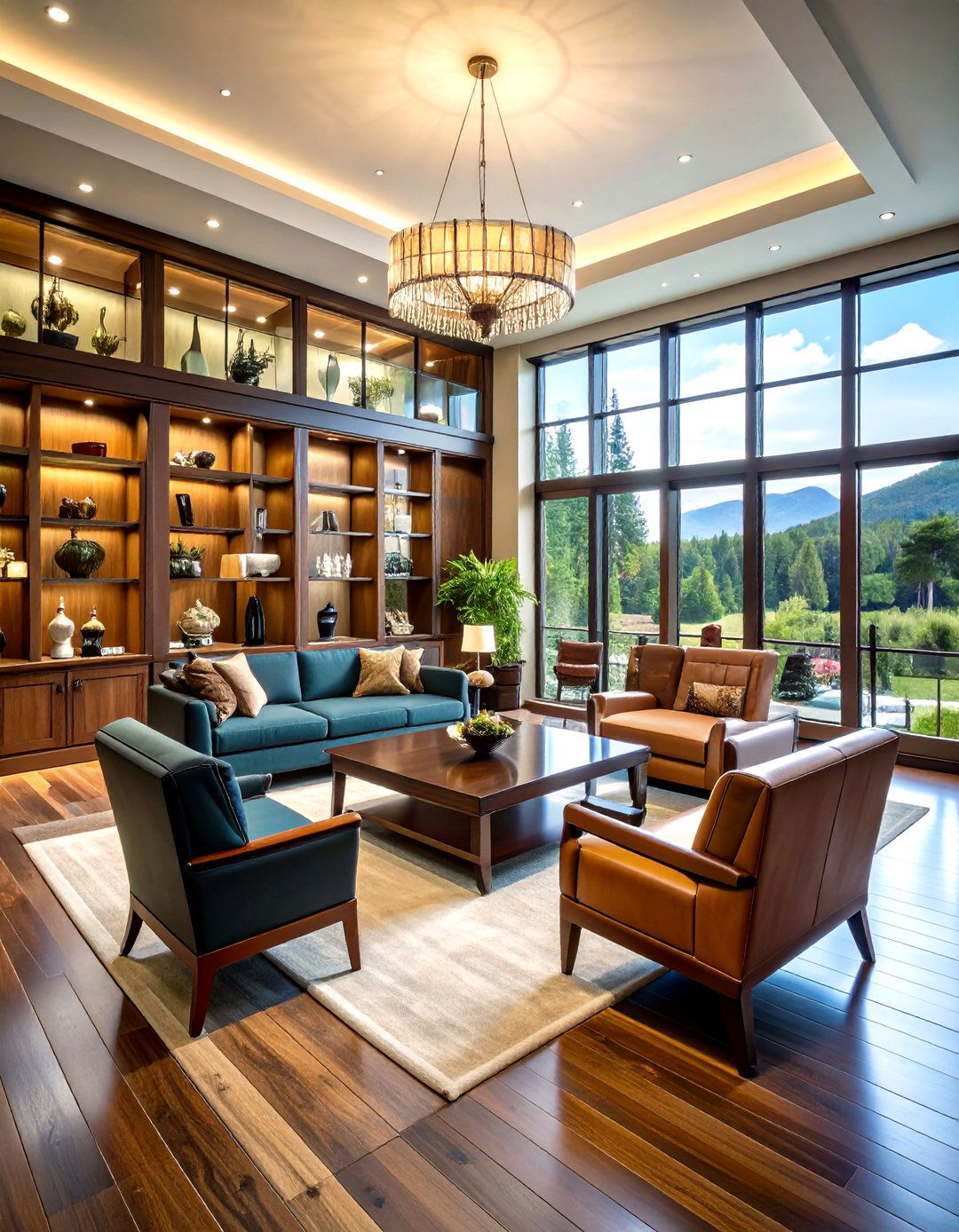
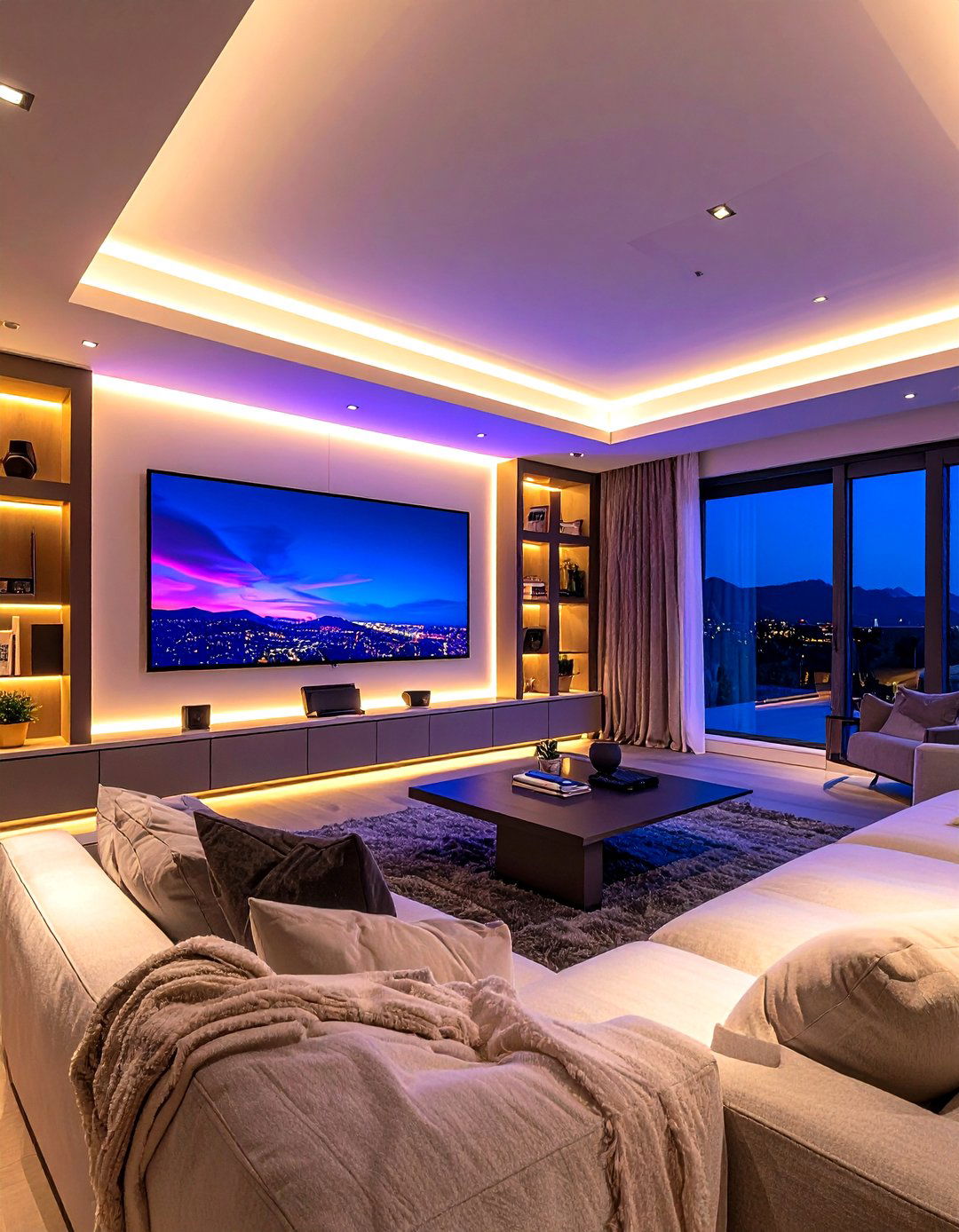
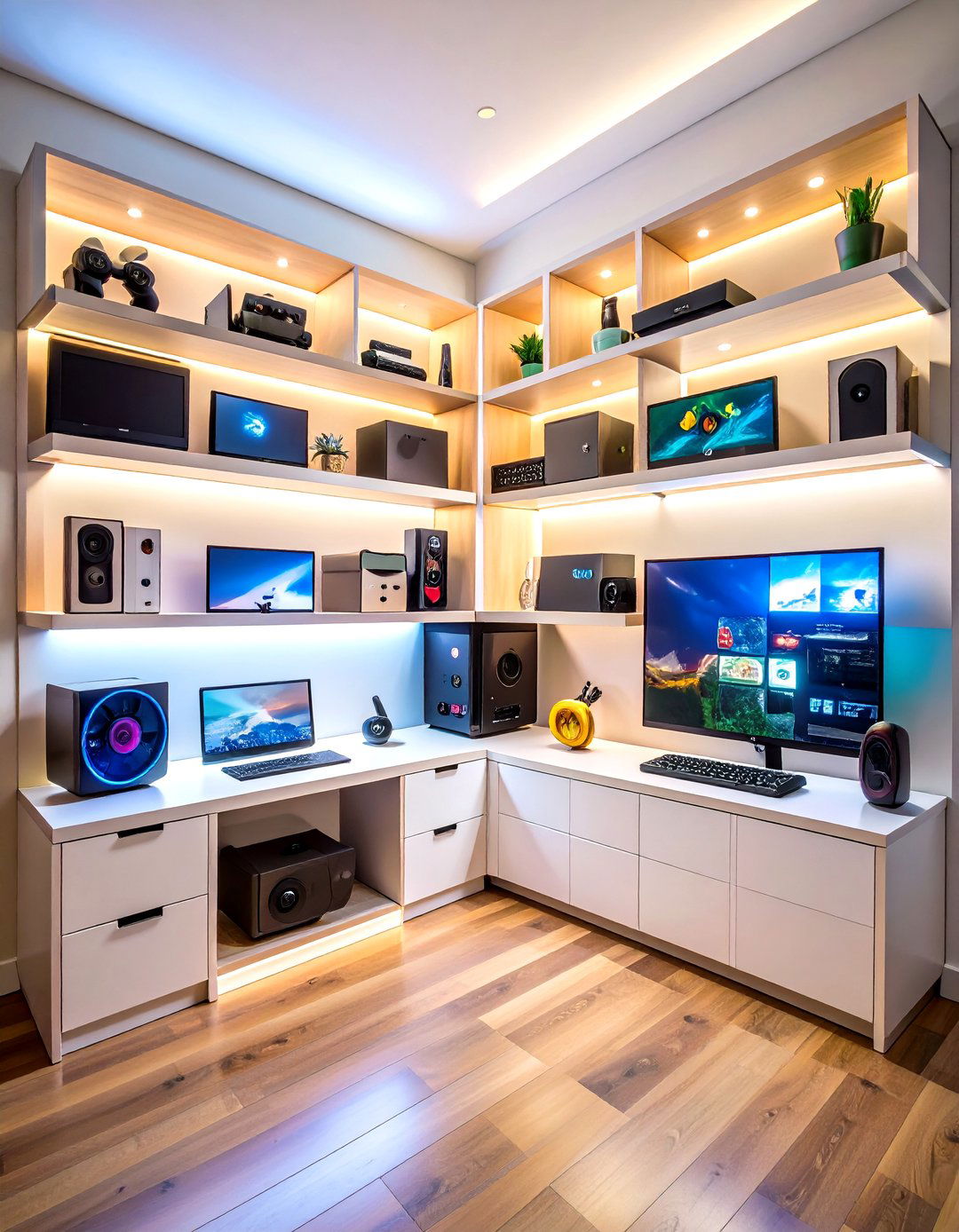
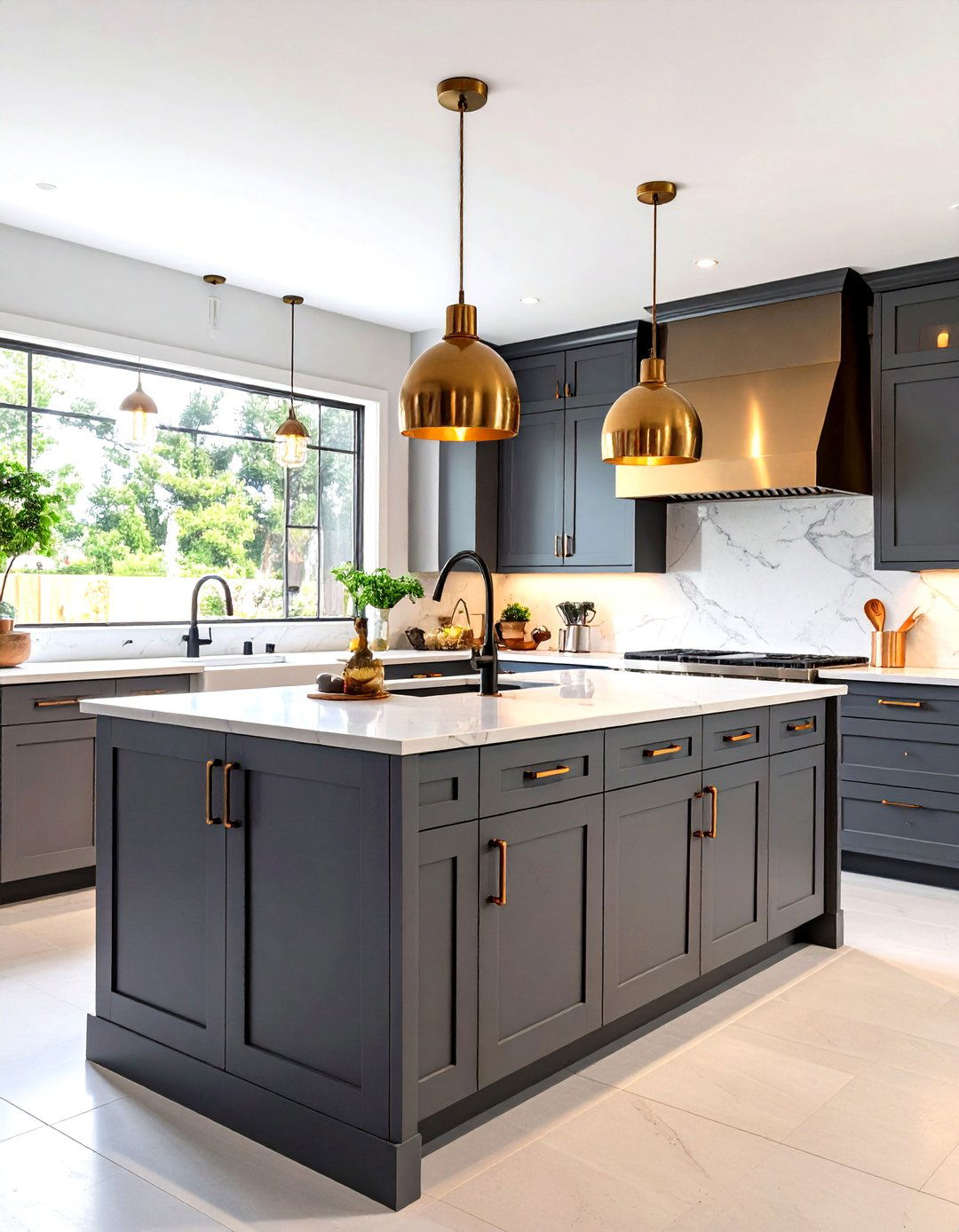
Leave a Reply